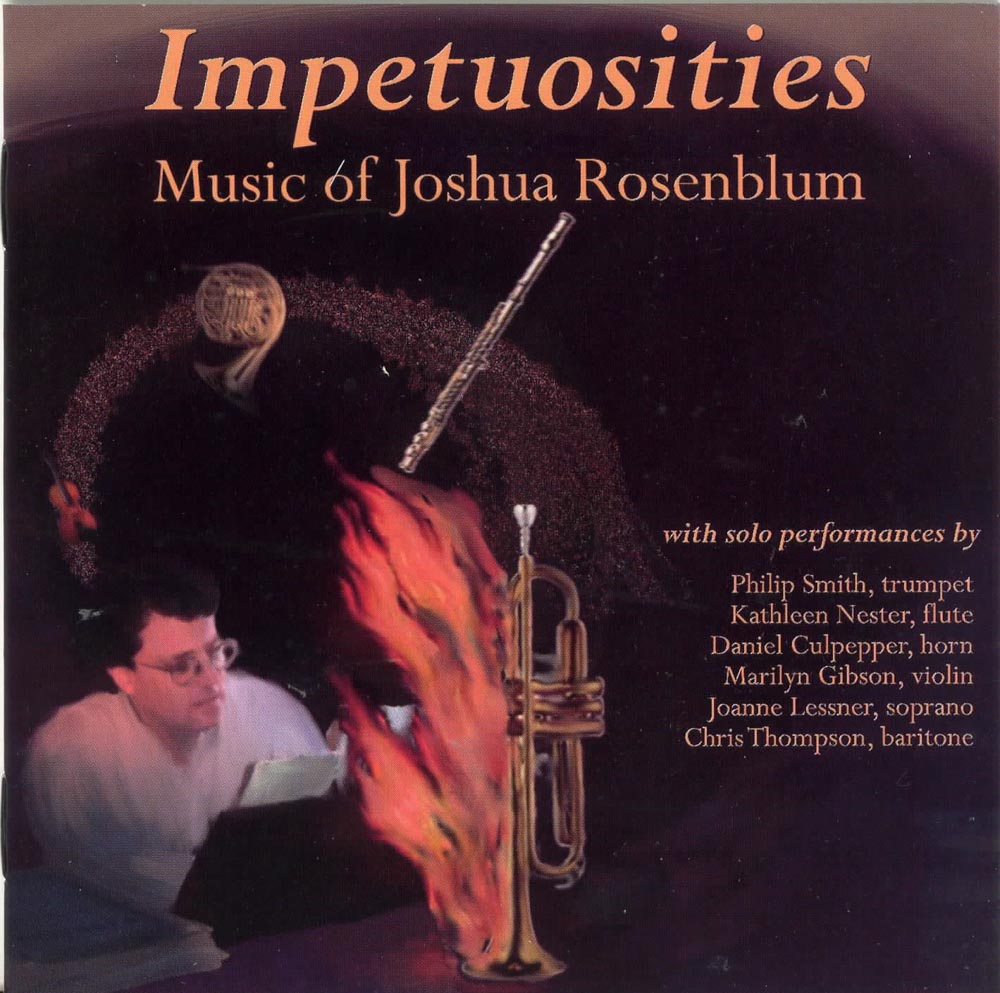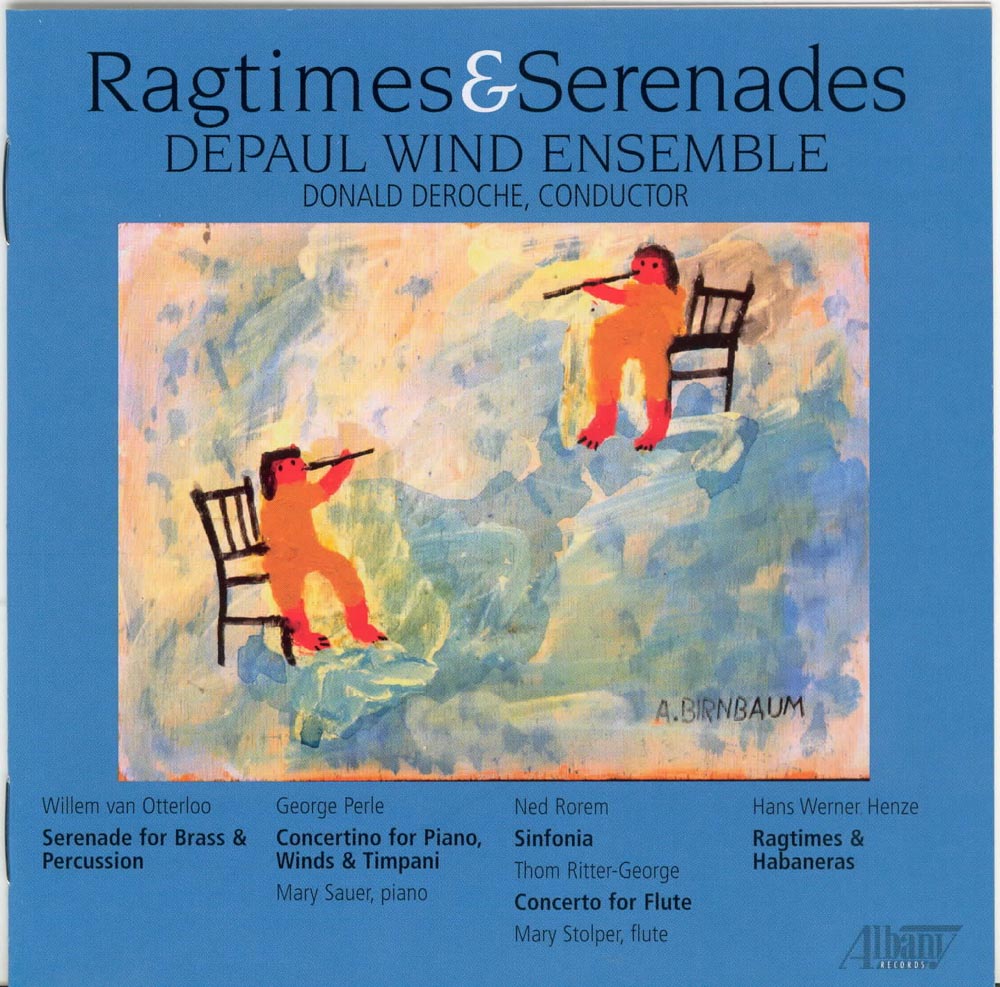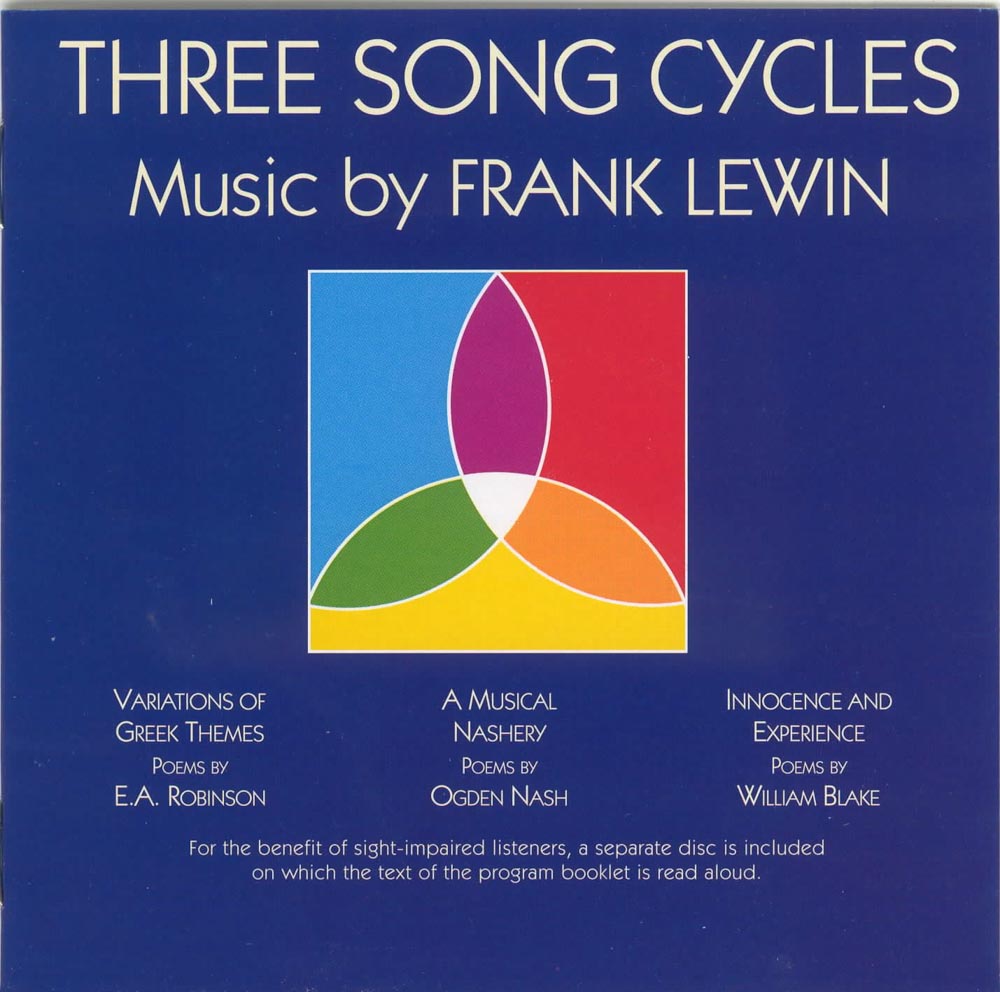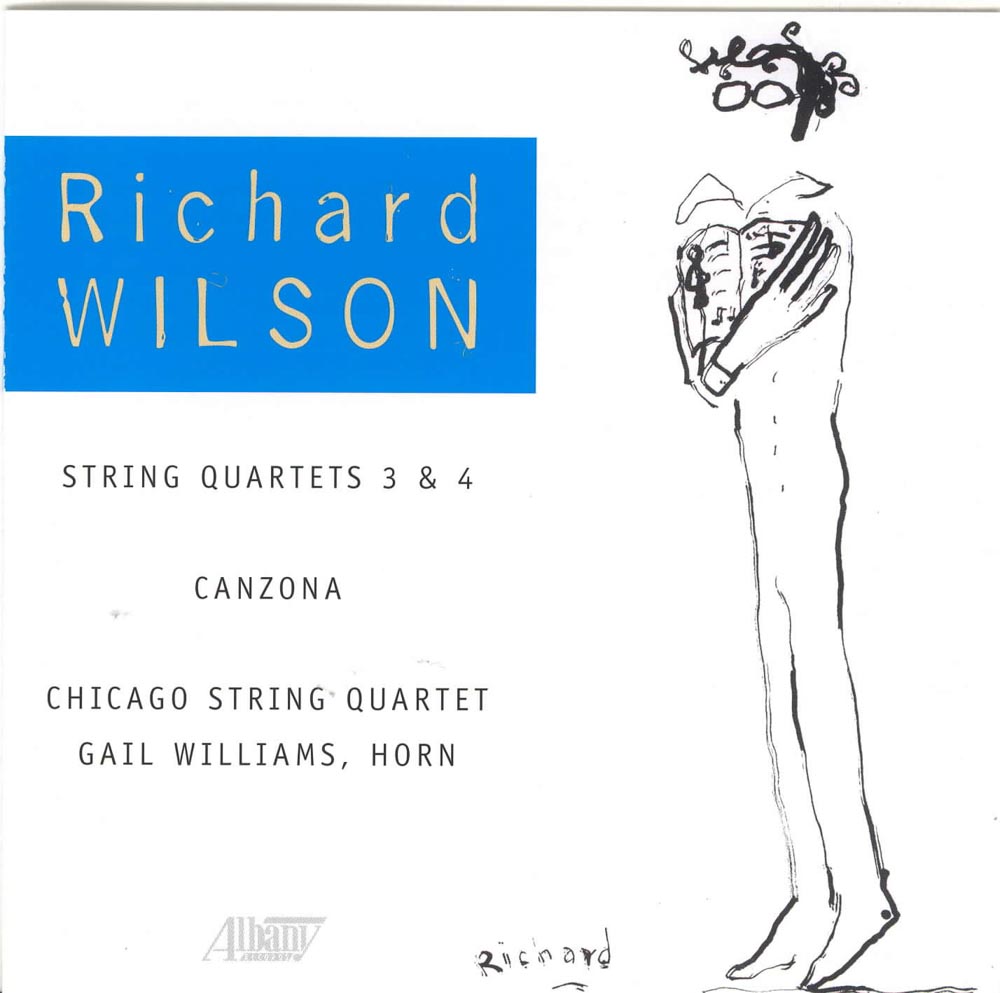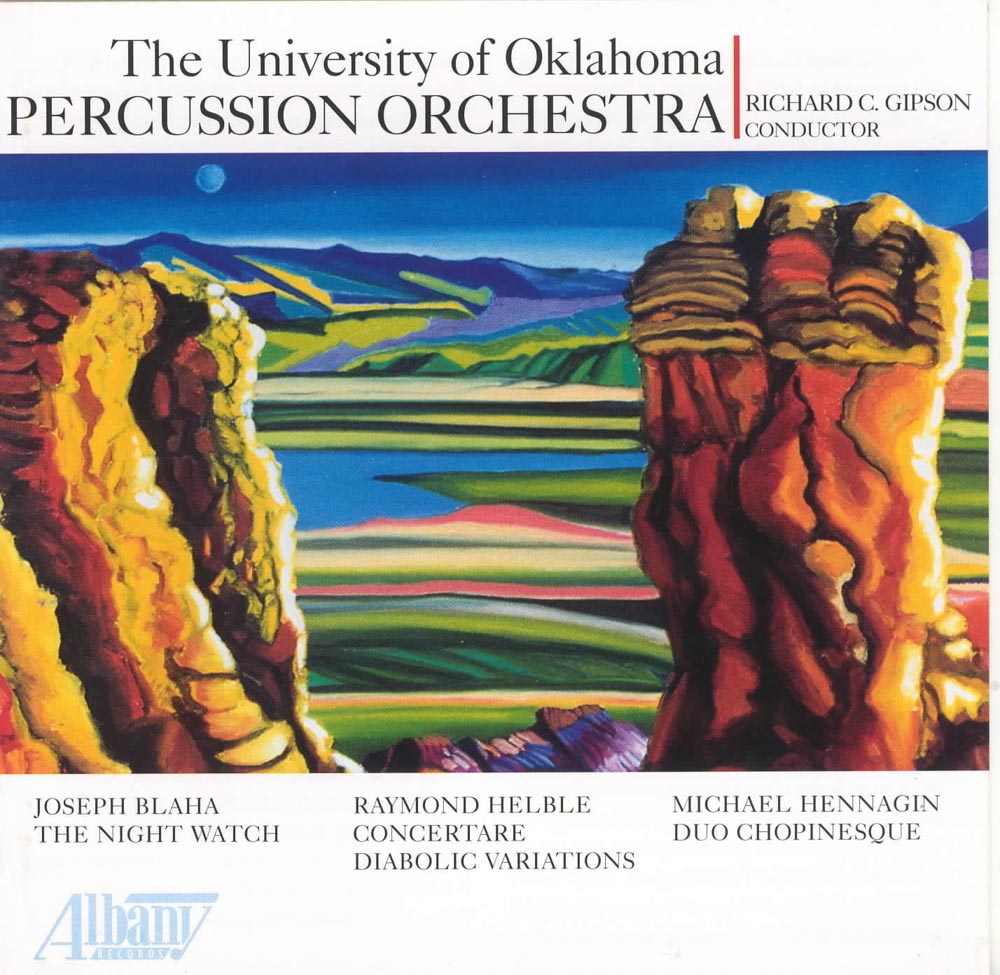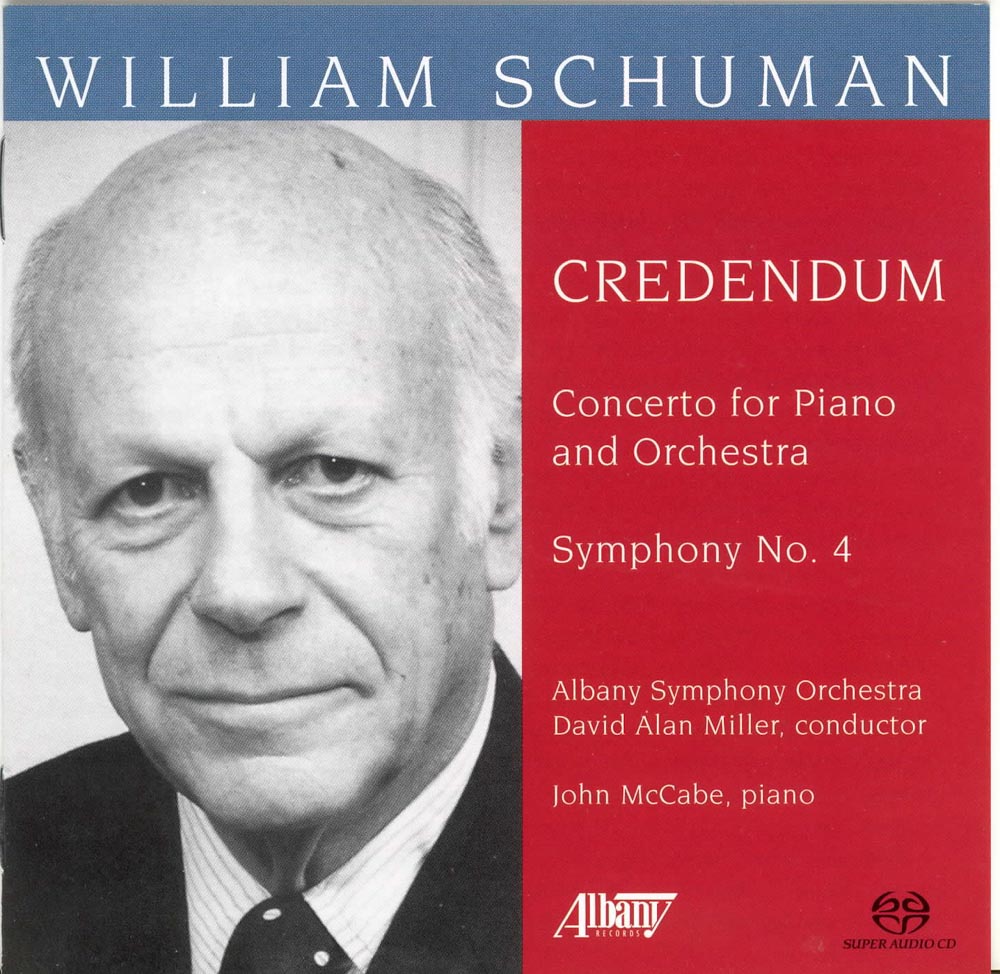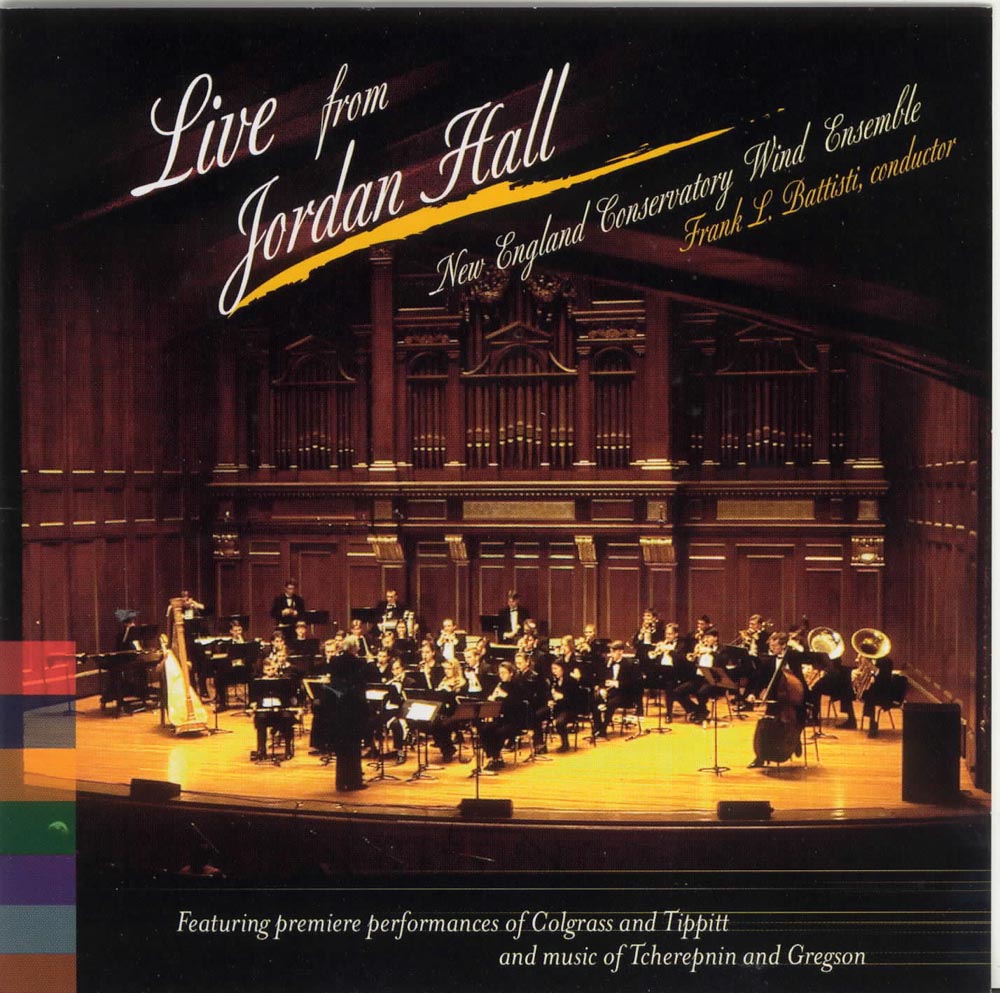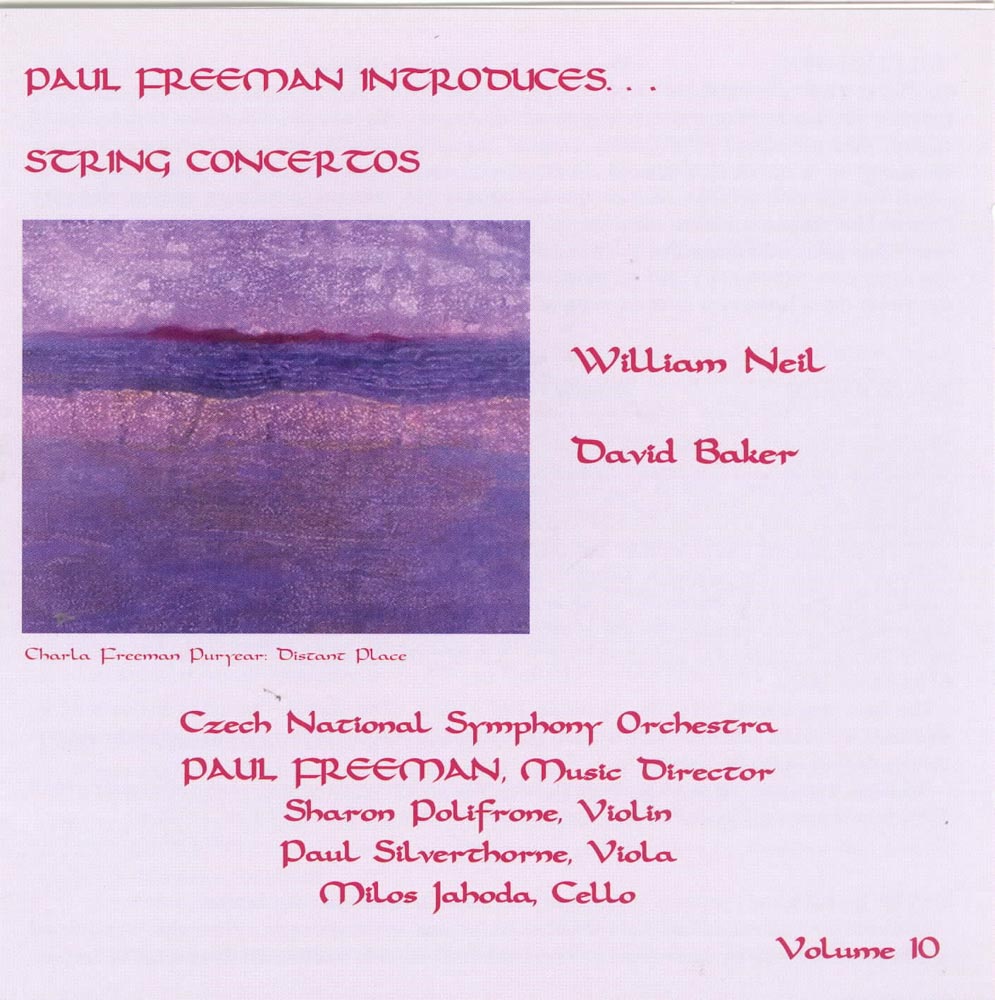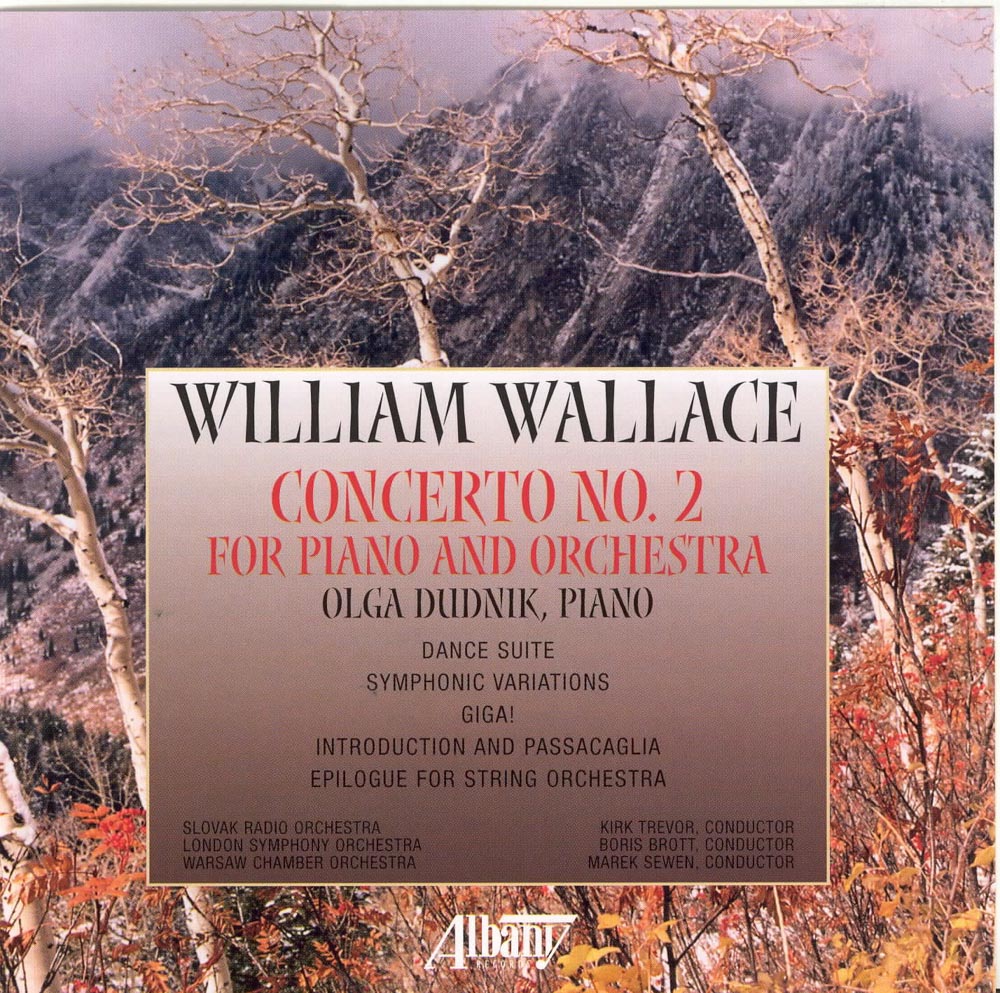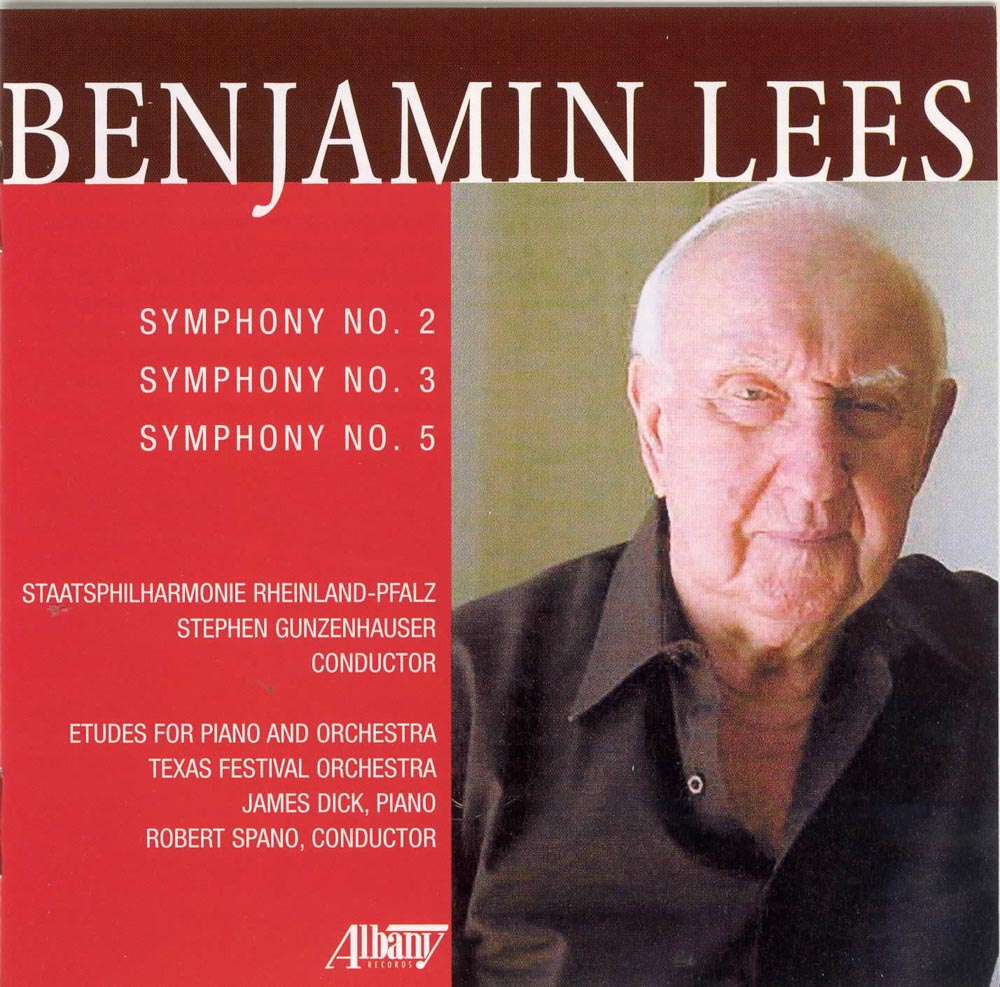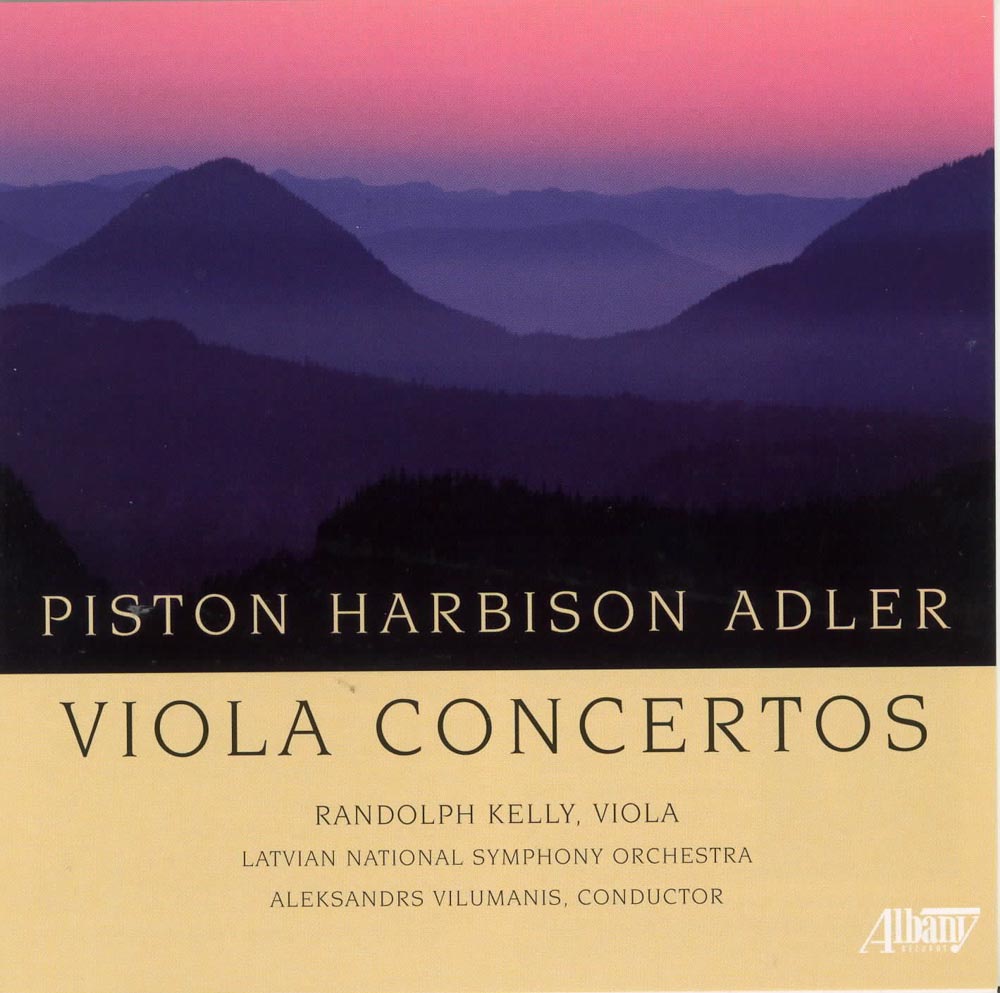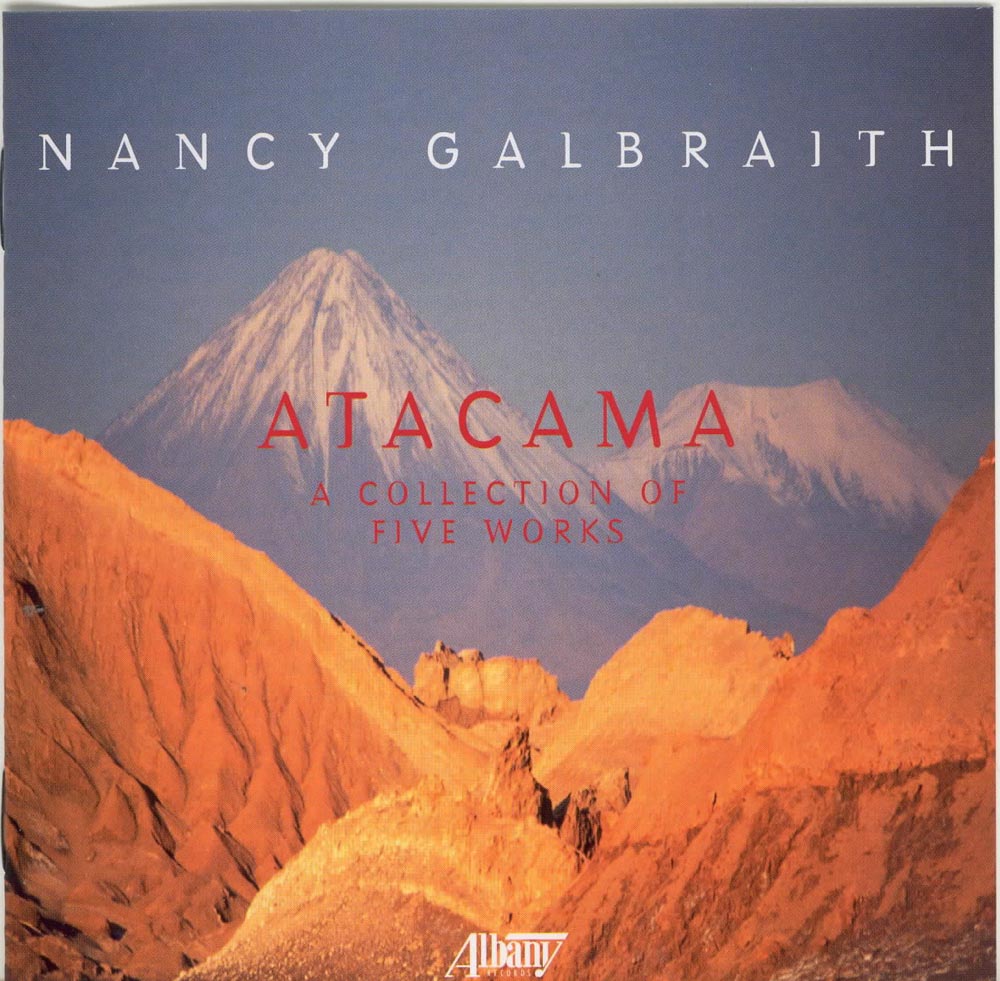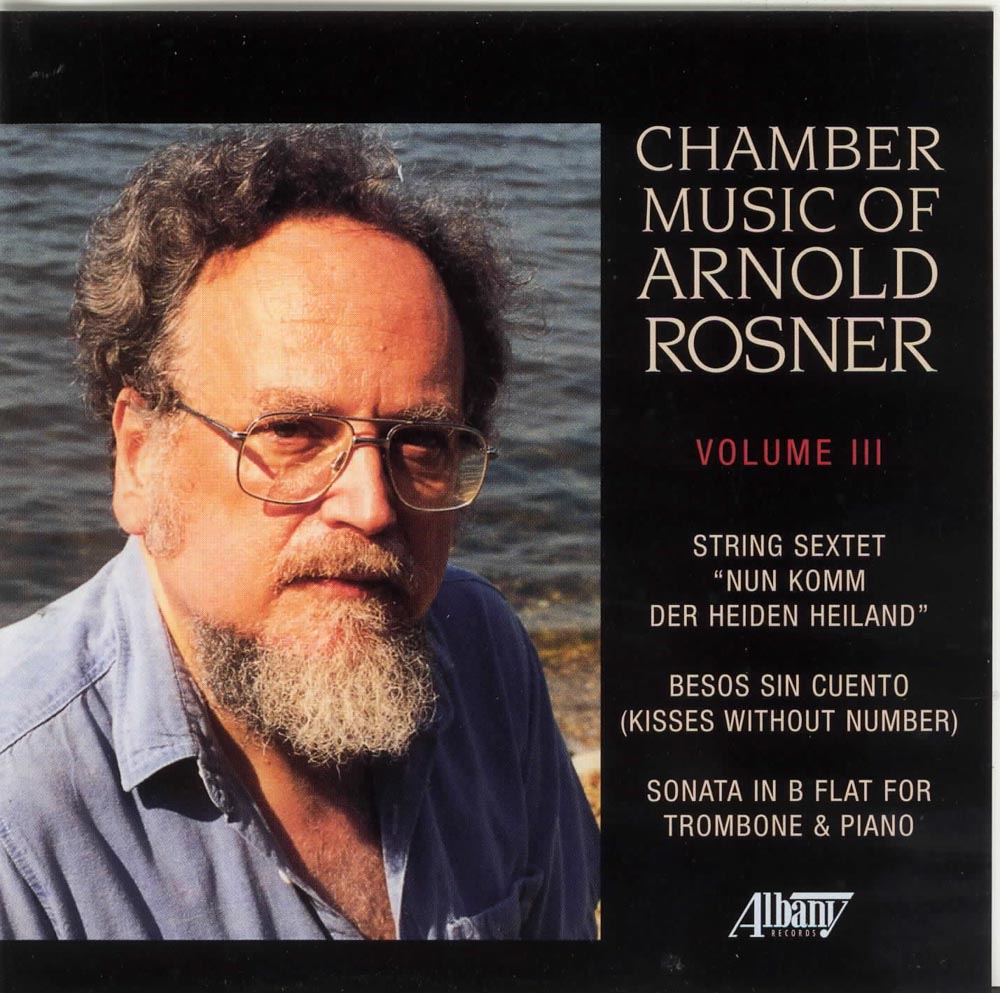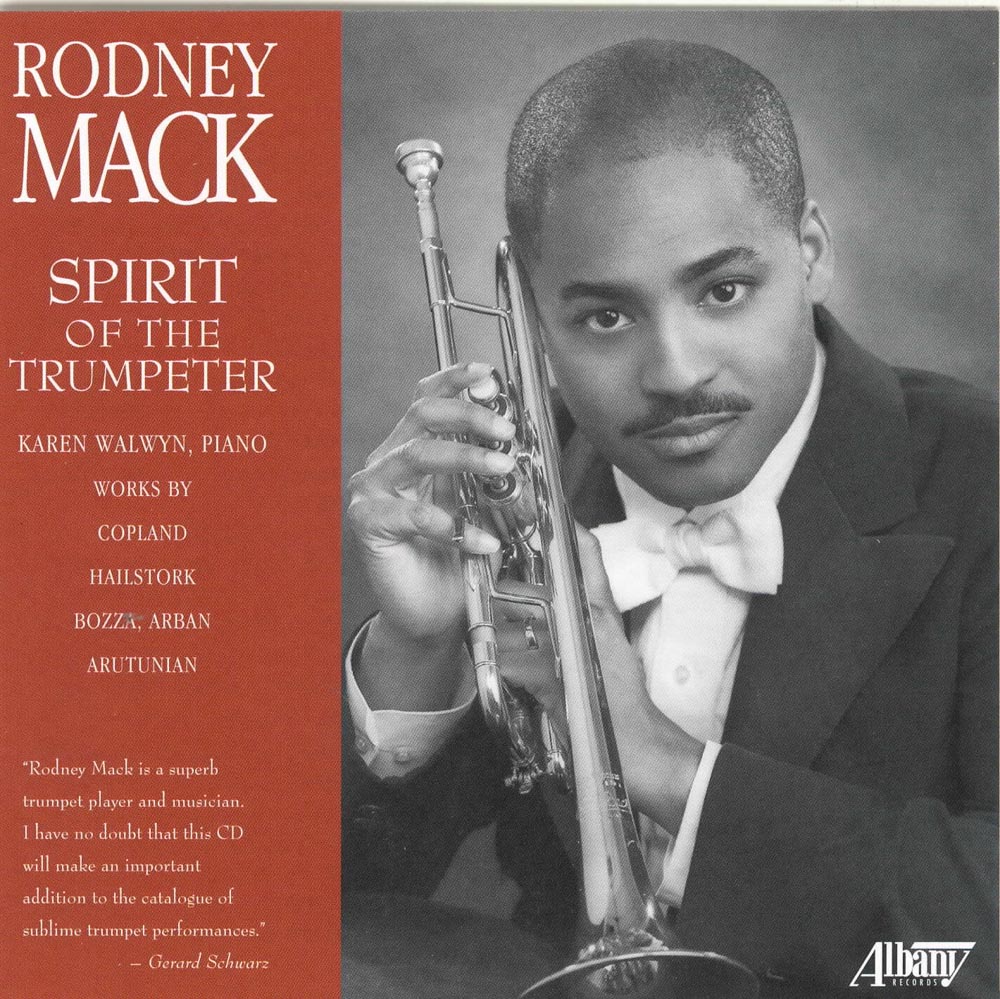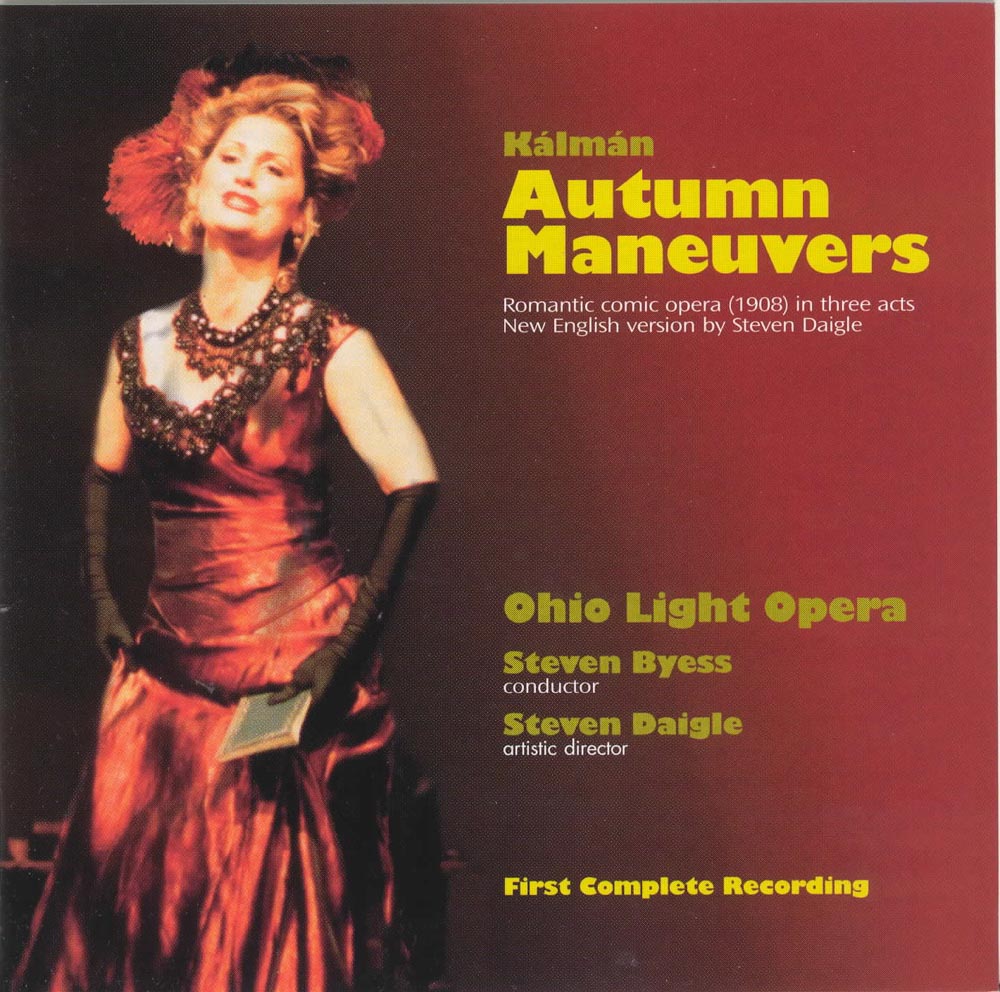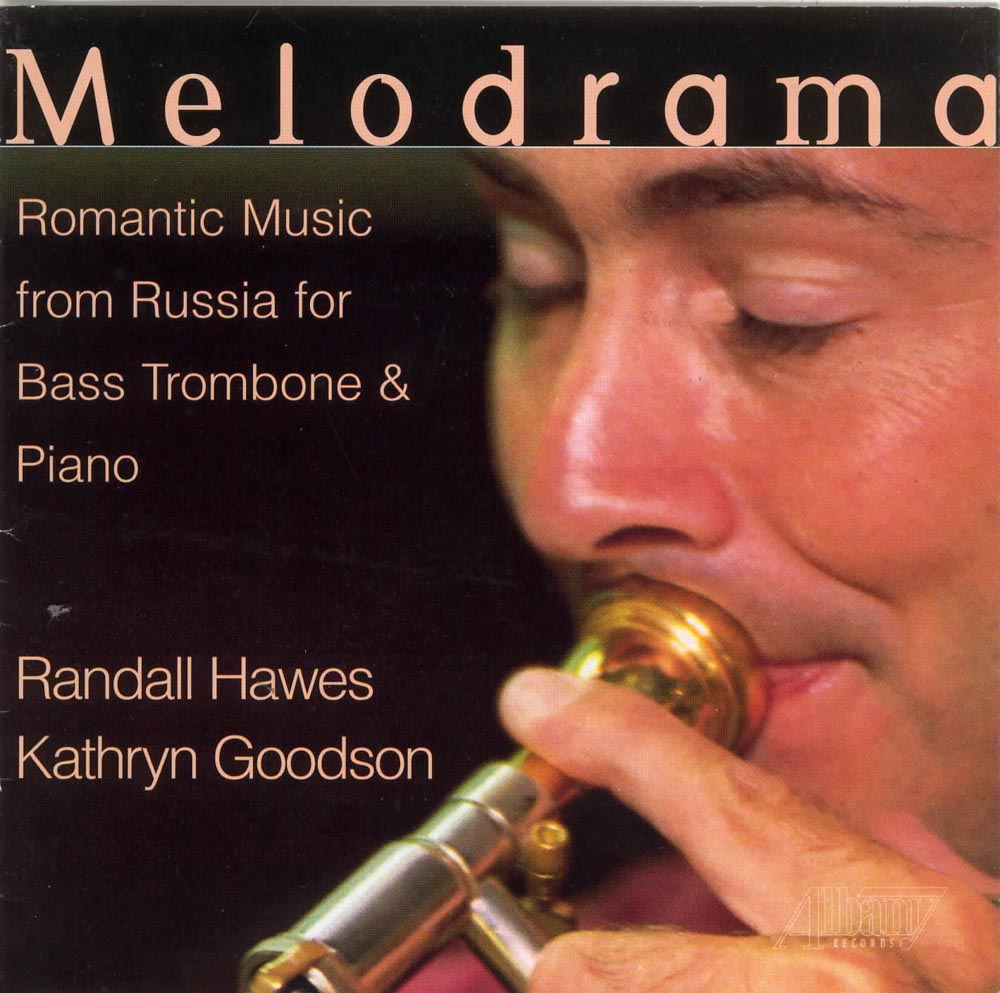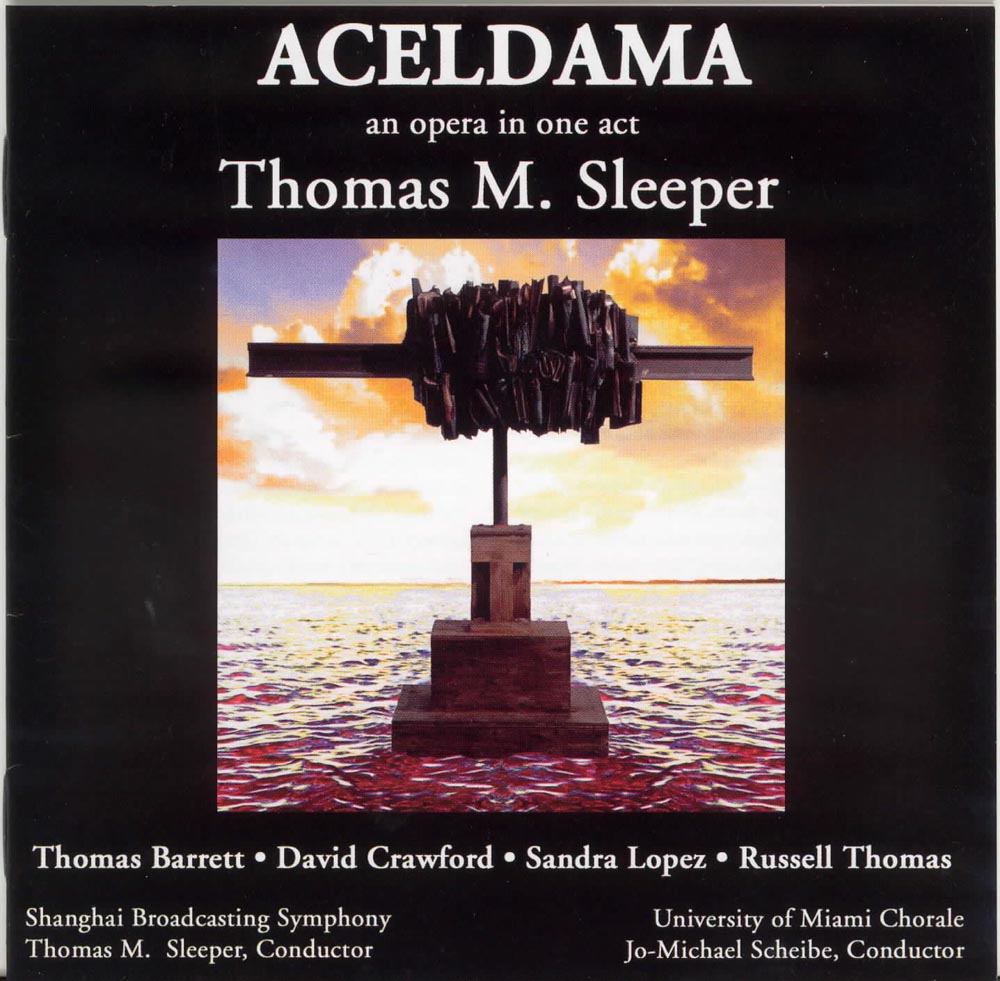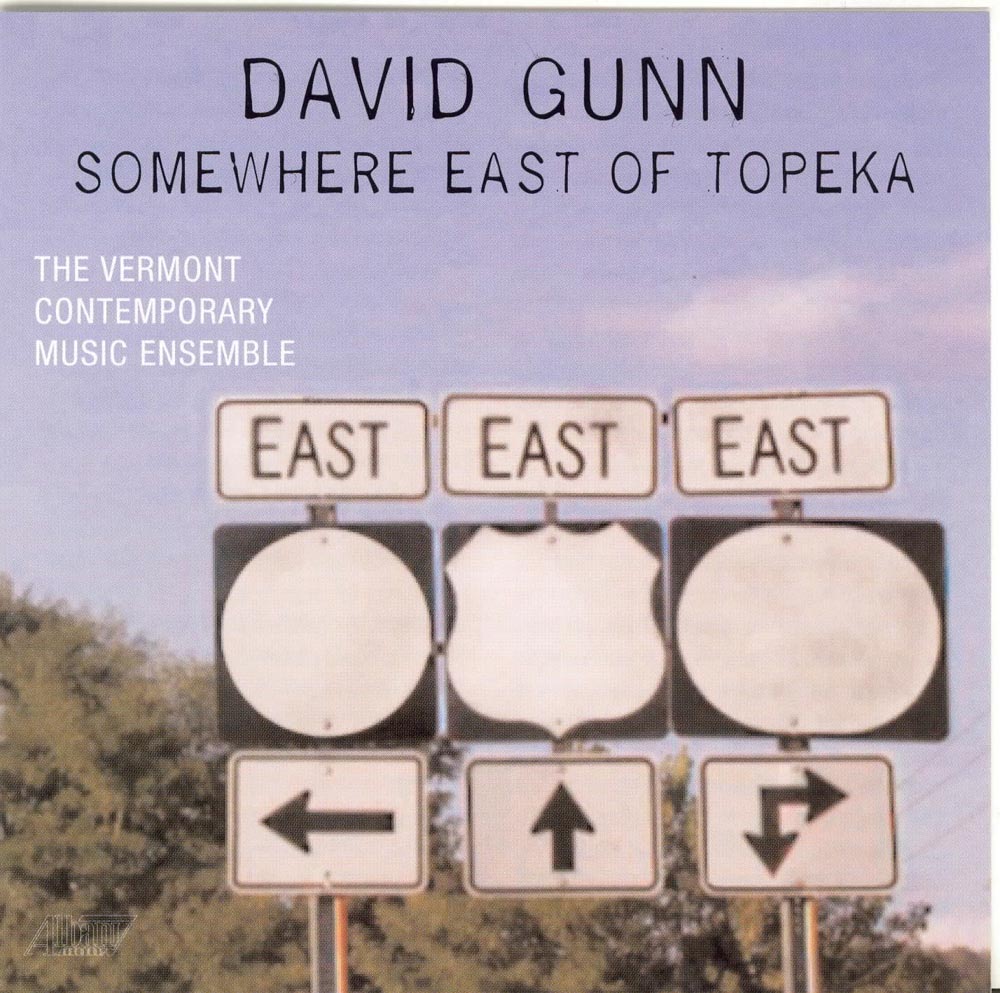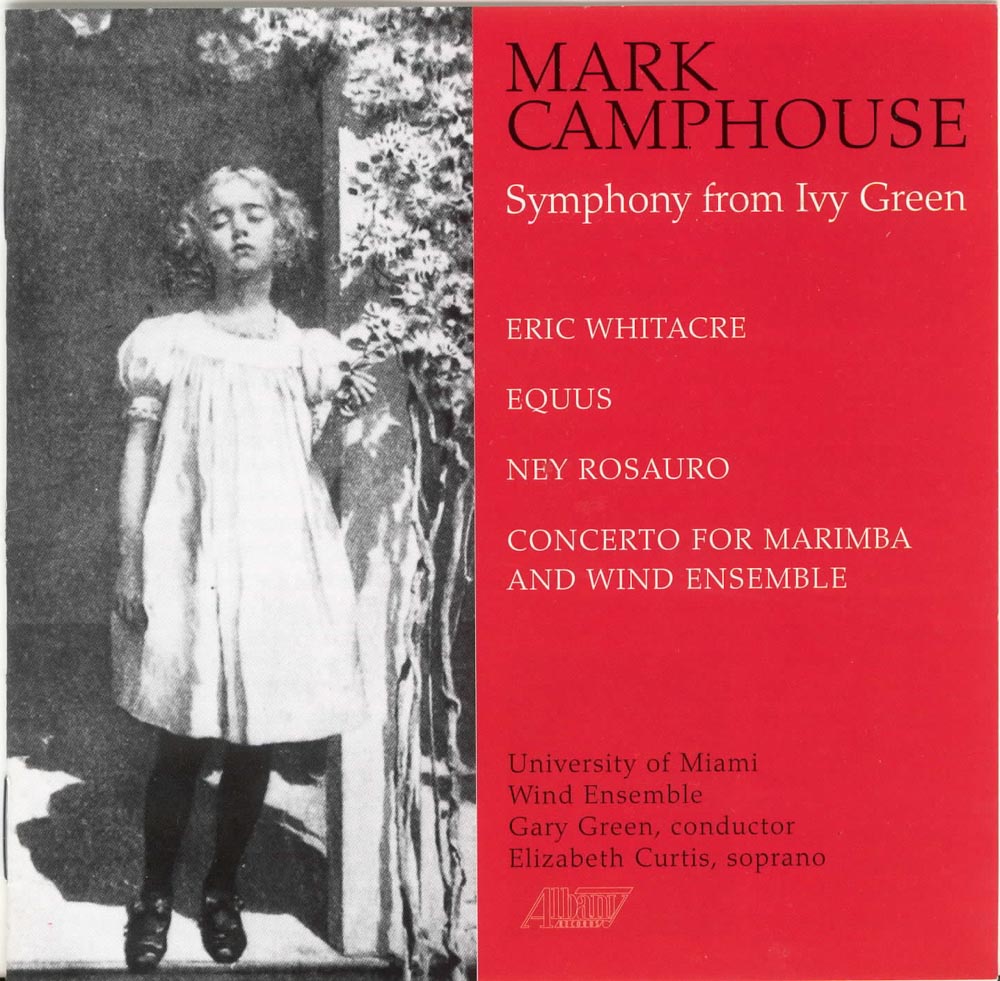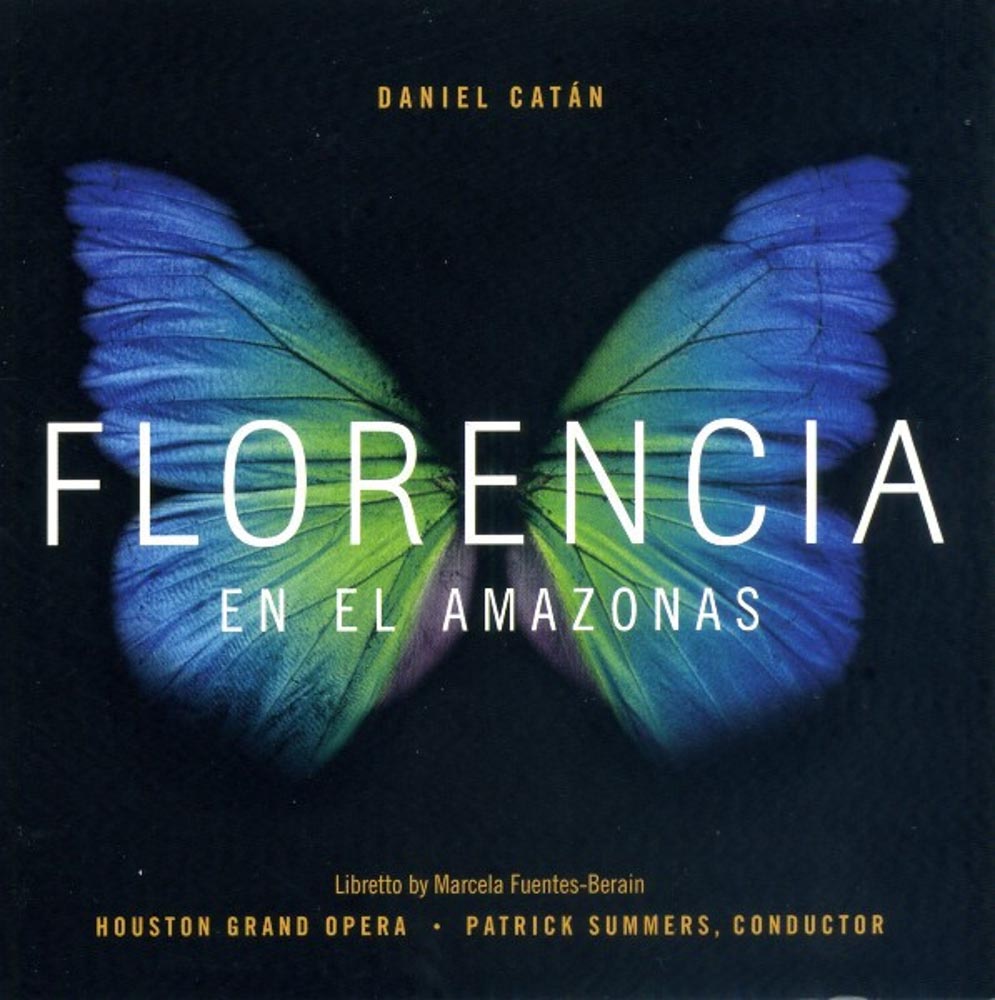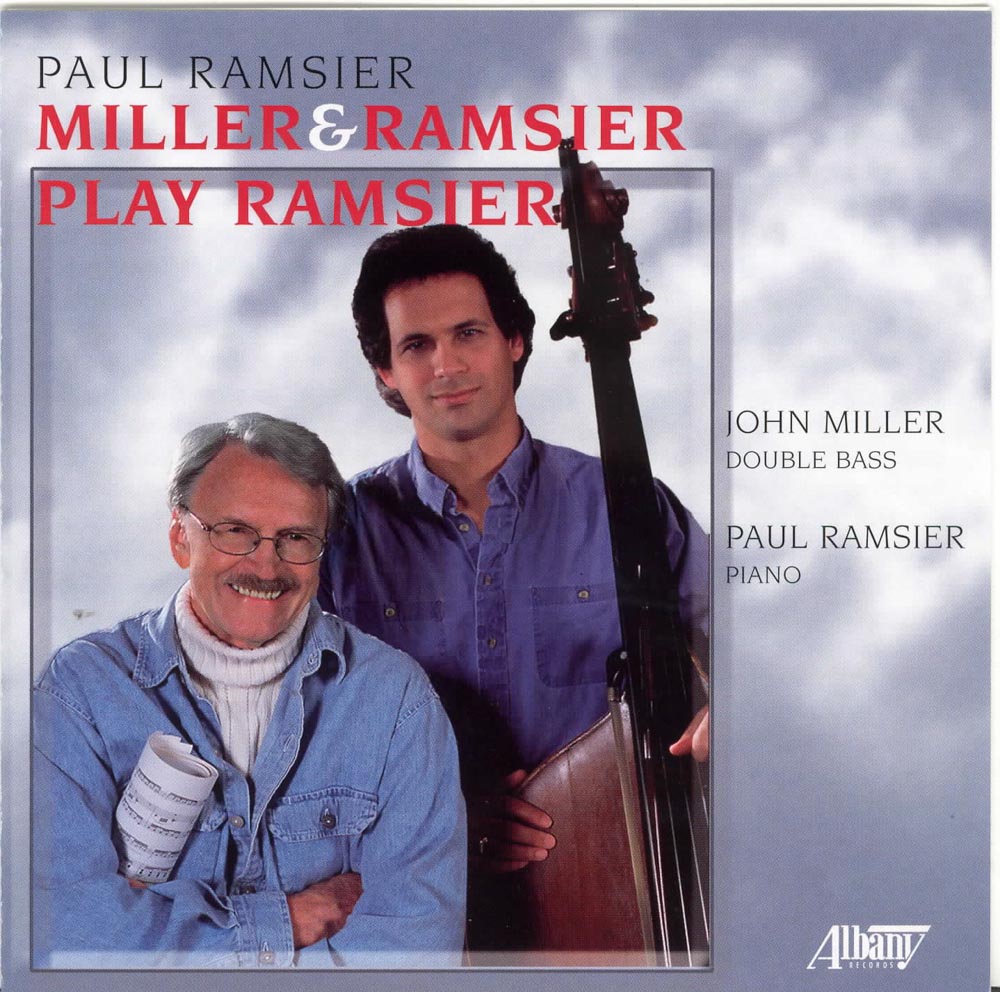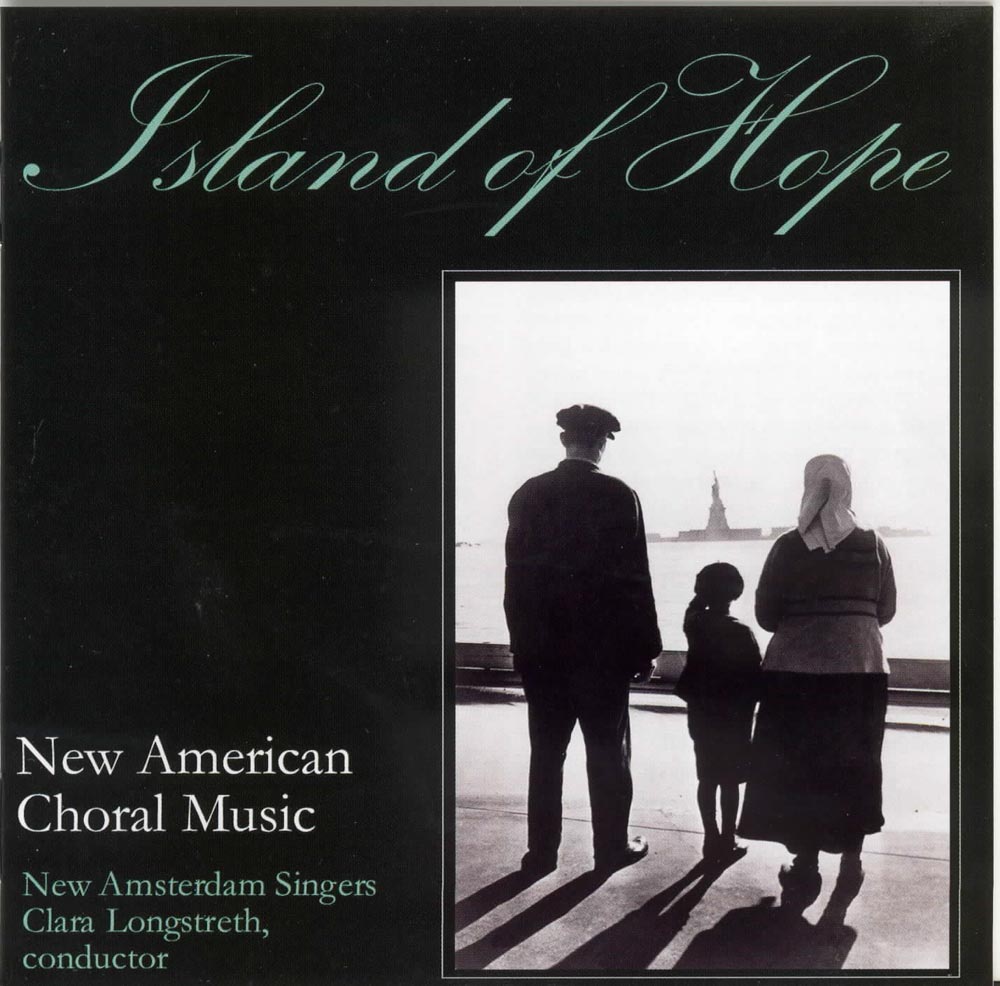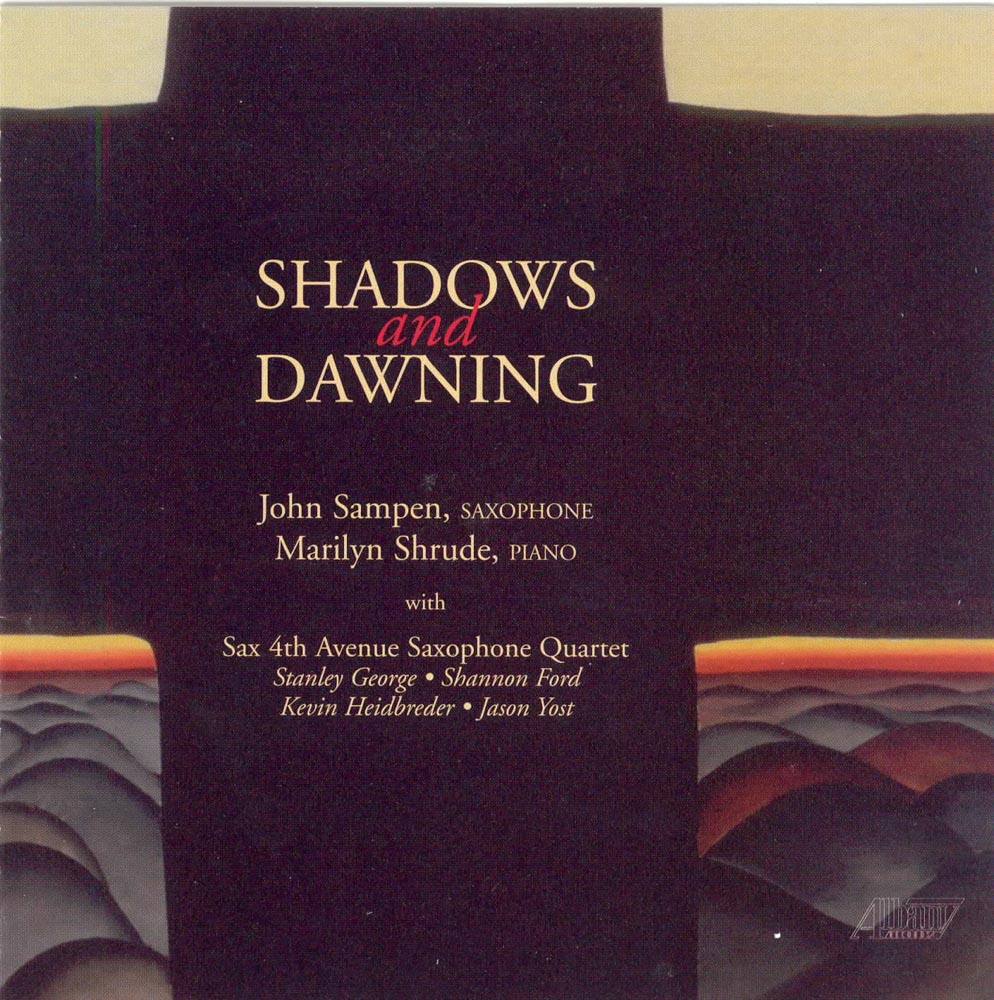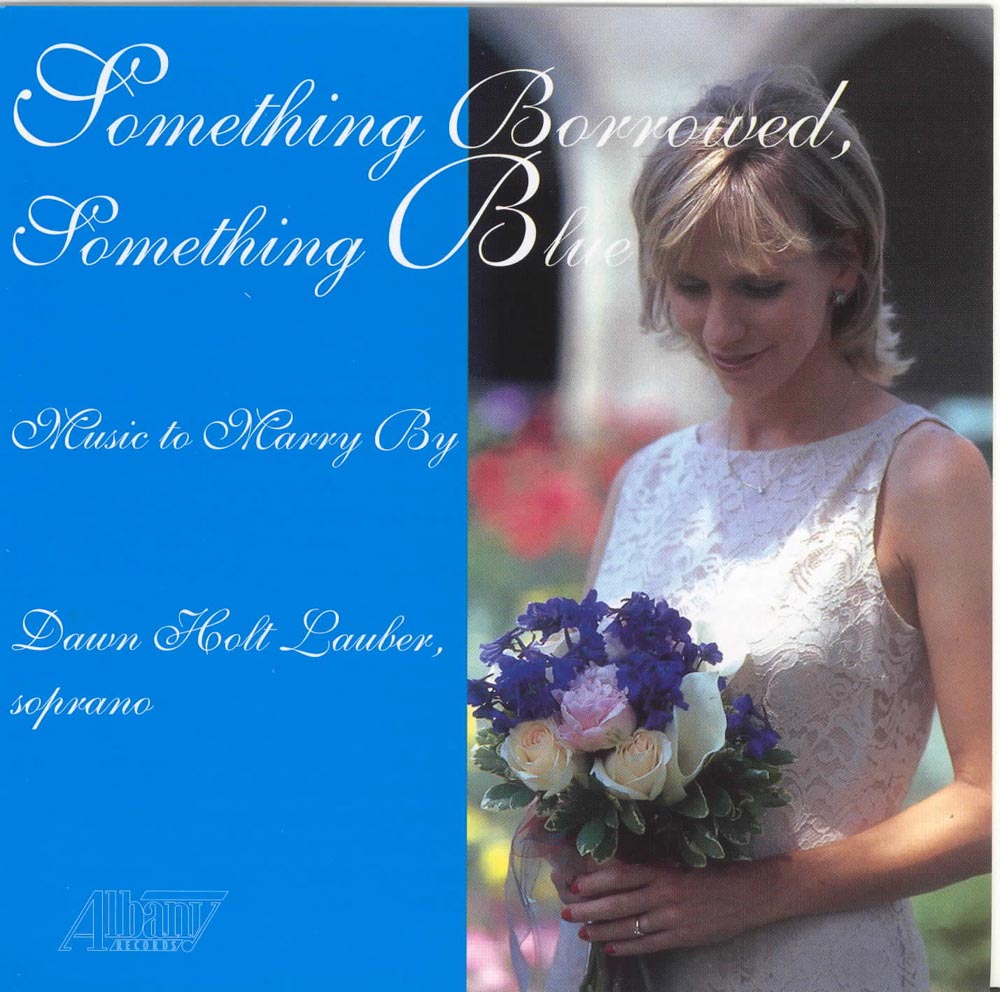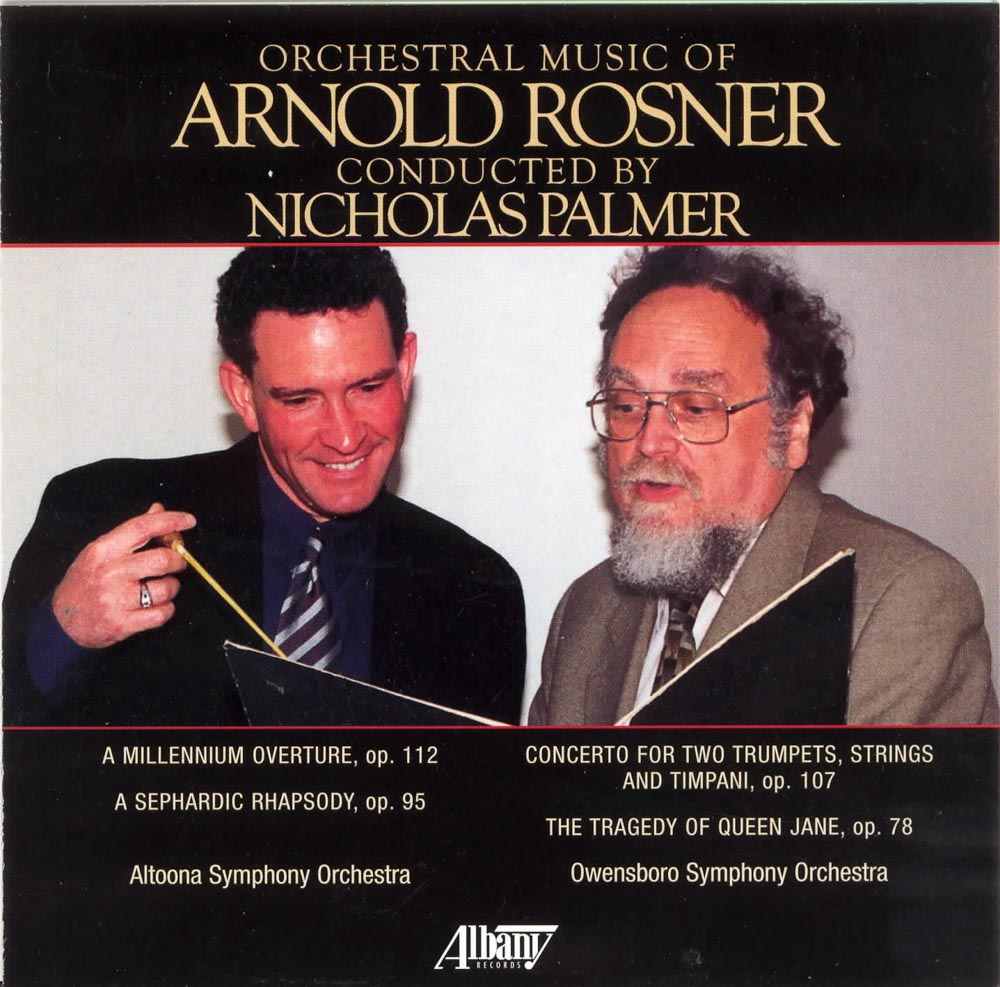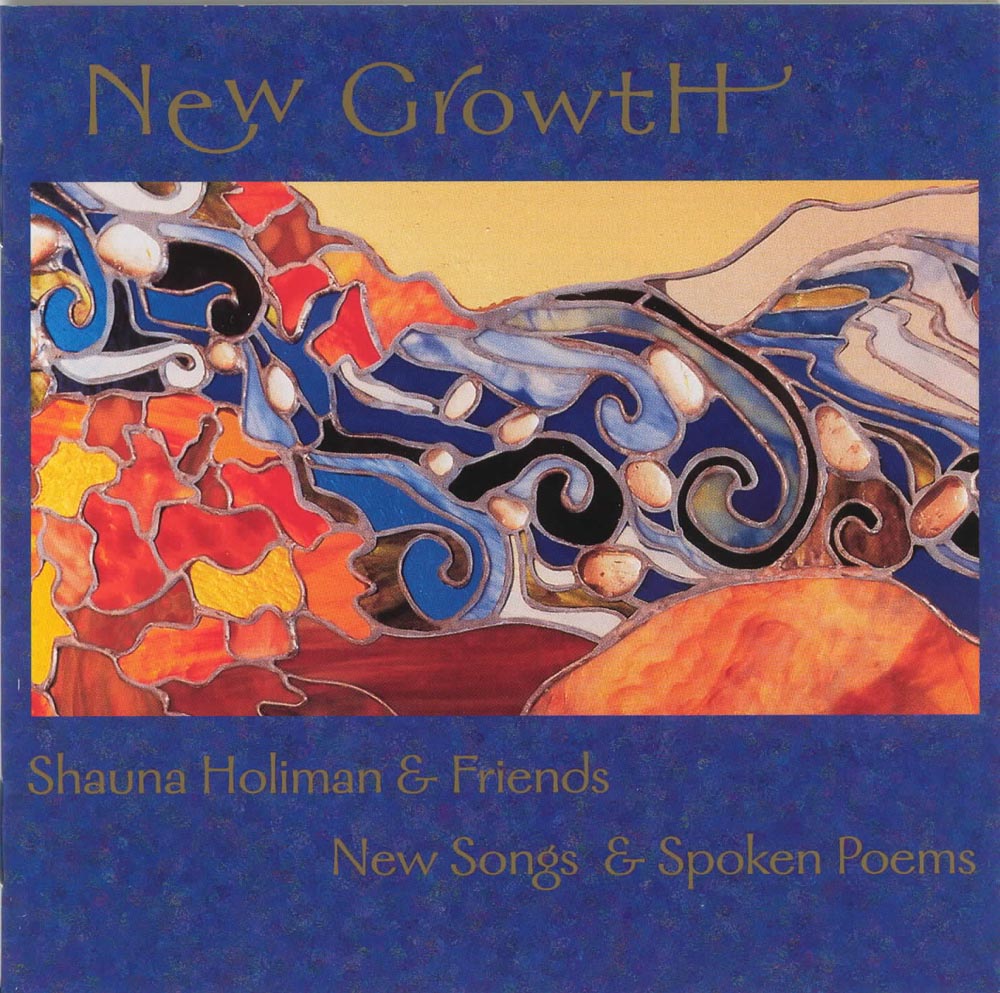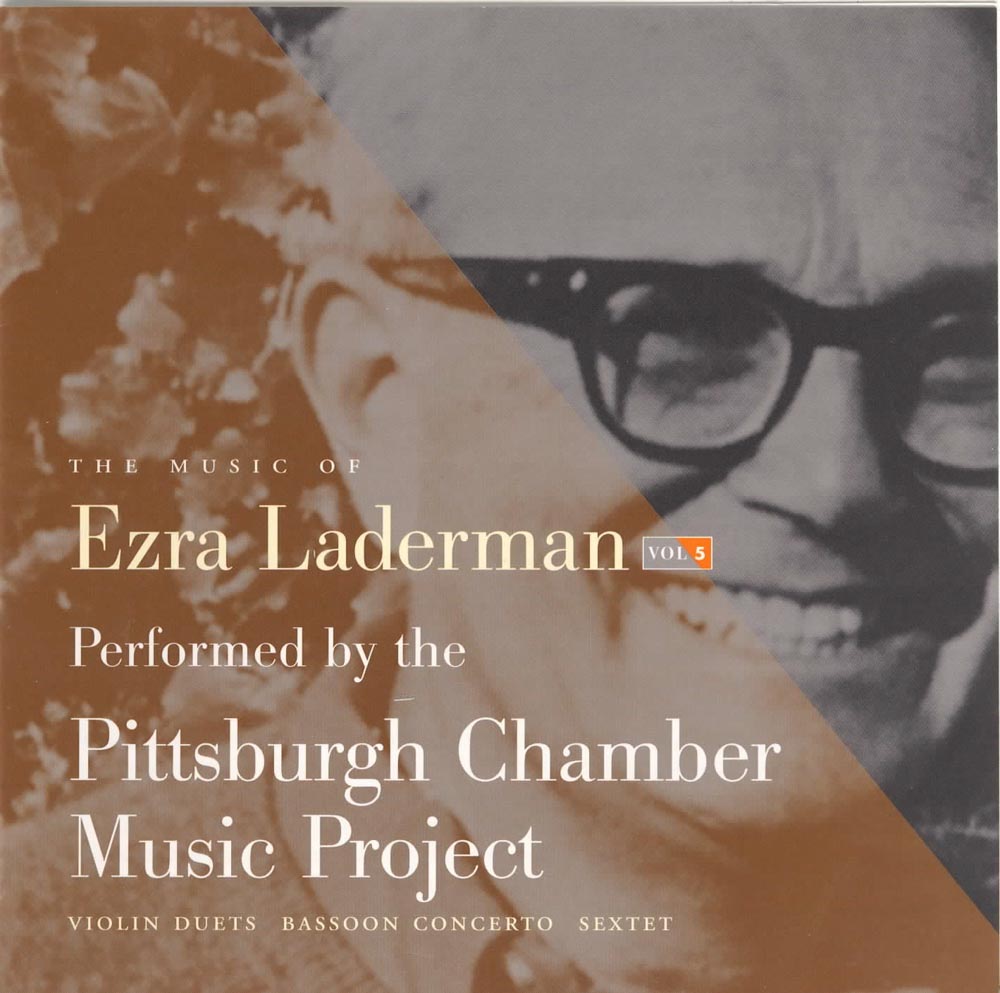Catalog #: TROY0571
Release Date: April 1, 2003ChamberJoshua Rosenblum is a composer, pianist and conductor. He is a graduate of Yale College and the Yale School of Music. He is the composer and co-lyricist of the cult hit musical Fermat's Last Tango, which enjoyed a successful Off-Broadway run at the York Theater, as well as the forthcoming musical Einstein's Dreams, based on the best-selling novel by Alan Lightman. Equally comfortable in the contemporary classical idiom, he has written numerous commissions and has received awards from ASCAP and Meet the Composer. His choral setting of "Jabberwocky" won the Ithaca College Choral Composition Contest, out of 200 entries nationwide. Rosenblum has conducted ten Broadway and Off-Broadway shows, including Miss Saigon, The Music Man, Anything Goes and Falsettos. He has appeared as pianist with the New York Pops and the American Symphony Orchestra. He is also highly sought after as an exponent of experimental, innovative, and unusual works of new music theater. He is also a music journalist who has written articles for Newsday, Stagebill and reviews for Opera News.
Catalog #: TROY0568
Release Date: April 1, 2003Wind EnsembleThe Dutch composer, Willem van Otterloo, composed his Serenade in 1944. It is in a post romantic style and runs the gamut from charming to brilliant to reflective. It is loosely based on the wind serenades of the 18th and 19th centuries and consists of four movements - March, Nocturne, Scherzo and Hymn. As the titles suggest, this music is meant to be accessible to the listener and appropriate for concert as well as occasional performances. George Perle has been celebrated as both a composer and theorist of extraordinary accomplishments. He is a favorite son of the DePaul School of Music, where he earned his BA in 1938. The Concertino for Piano, Winds and Timpani was composed between September 24, 1978 and February 20, 1979, on a commission from the Fromm Music Foundation. It was premiered in Chicago in April 1979 with Ralph Shapey conducting. Ned Rorem's Sinfonia was written as the first commission for the American Wind Symphony Orchestra and its conductor, Robert Boudreau. It is cast in four brief sections, two of which are lyrical and reflective, and two of which are full of energy. The work is short, but possesses both wit and charm. Thom Ritter-George grew up in Detroit, Michigan. Today he is a Professor of Music in Idaho State University's Department of Music. His Concerto for Flute was written in early 1966 on commission from the music publisher, P. Litchard Toland. Mr. Toland requested two special features for the new work. The first was that the solo part should be written with optional scoring for piccolo in certain passages. The second was that there should be three versions of the accompaniment - orchestra, piano and wind ensemble. In his role as Orchestra Librarian for the Eastman School of Music, Mr. Toland had seen many situations where accompaniment alternatives were needed. Hans Werner Henze's Ragtimes and Habaneras was originally written for brass band and was re-scored for wind orchestra by his pupil Marcel Wengler. The work consists of eleven short dance movements reminiscent of ragtime dances like the Charleston and the Foxtrot, and Latin American dances such as the tango, Son and Rumba. The final movement is a kind of cross between a ragtime and a march. While the harmonic materials are modern and each form a kind of short parody, the music is full of humor and fun.
Catalog #: TROY0528
Release Date: April 1, 2003VocalVariations of Greek Themes was commissioned by The Chamber Music Society of Lincoln Center and received its first performance on November 20, 1977, with Maureen Forrester as soloist. "Variations of Greek Themes," Edward Arlington Robinson's collection of twelve poems based on texts by ancient authors, was published in 1915. Eight of the poems are set in this cycle. Innocence and Experience is a cycle of songs from the poems of William Blake. It was commissioned by the friends of Music at Yale (where Mr.Lewin taught music from 1971 to 1992) and received its first performance in 1961, with Helen Boatwright as soloist. Seven poems by Blake are arranged into a cycle of two contrasting days; they are set to music for soprano solo, and an ensemble of flute, oboe, horn, harp, two violins, viola, and two cellos. The text forms a cosmos of recurring images and ideas, several of which are reflected by corresponding musical devices. A Musical Nashery is a cycle of songs from the poems of Ogden Nash and was commissioned by Naomi Lewin, who gave its first performance on March 5, 1980, at the Yale School of Music, as part of her recital for a Master of Music degree. Complete texts are included in the program booklet for all the songs.
Catalog #: TROY0573
Release Date: March 1, 2003ChamberRichard Wilson is the composer of some eighty works in many genres, including opera. A Phi Beta Kappa graduate of Harvard, Mr. Wilson holds the Mary Conover Mellon Chair in Music at Vassar; he is also Composer-in-Residence with the American Symphony Orchestra for which he gives pre-concert talks. He has been a member of the program committee of the Bard Music Festival since its inception. His String Quartet No. 3 was commissioned for the Muir String Quartet by the Walter W. Naumburg Foundation. The Muir gave the first performances at Yale and Vassar in April, 1983 and recorded the work for CRI. In July, 1984, the Delme Quartet gave the London premiere in Wigmore Hall. The String Quartet No. 4 was commissioned for the Chicago String Quartet by the Prince Charitable Trusts and the Chicago Chamber Musicians. The world premiere of the four-movement version took place at the 92nd Street Y, New York City, on January 17, 1998. The five-movement version (the version presented here) was premiered at Vassar College on February 17, 2001. In both instances, The Chicago String Quartet performed. Canzona for Horn and String Quartet was written in 2001 in memory of Luise Vosgerchian, who died in March, 2000. The composer writes: "Ms. Vosgerchian taught music at Harvard for thirty-one years beginning in 1959, the year I became a student there. A charismatic performer, lecturer and mentor, she was an inspiration to hundreds of young musicians at Harvard, Tanglewood and in the Boston area." The work received its first performance at Vassar College on February 8, 2002, by the same performers who have recorded it here.
Catalog #: TROY0567
Release Date: March 1, 2003ChamberJoseph Blaha is currently assistant professor of music and director of bands at Roanoke College in Salem, Virginia. In 1983, he enrolled as a doctoral student in composition at the University of Oklahoma and studied with Michael Hennagin earning a DMA in 1991. Raymond Helble, a native New Yorker, studied at the Eastman School of Music with Sam Adler, Wayne Barlow and Joseph Schwantner. A highly polished finish, elaborate motivic development, contrapuntal dexterity, and a concentrated intensity of expression, mark Helble's work, whether he uses tonal, serial, modal, or atonal materials to fashion his work. Born in The Dalles, Oregon, Michael Hennagin composed in virtually every medium including music for film, television, and stage. His broad repertoire includes instrumental and vocal solos, various chamber ensembles, symphonic band, orchestra, and a large body of choral music for which he is widely recognized. He joined the faculty of the University of Oklahoma in 1972 and retired in 1992 to devote full time to his active composing schedule. He died suddenly in June 1993.
Catalog #: TROY0566
Release Date: March 1, 2003OrchestralThose of you who know your English composers; yes, indeed, it is John McCabe who is the piano soloist in the Schuman Piano Concerto. In fact, it was John who recommended that the Orchestra perform the piece in the first place. In the new SACD format, this is a great demonstration disc to show just how good the modern orchestra can sound. Here, Credendum appears for the first time ever in stereo in any format. It is one of the loudest pieces of music ever written. The work takes its name from the Latin for "that which must be believed." It was commissioned through the Department of State (the first time a government agency had ever commissioned a piece of music) to honor UNESCO, the United Nations organization in charge of coordinating arts, science and education programs worldwide. It was premiered by the Cincinnati Symphony Orchestra, Thor Johnson conducting, on November 4, 1955, in a special concert honoring the Fifth National Conference of the United States National Commission for UNESCO. The Concerto for Piano and Orchestra was originally derived from an unperformed concerto fashioned in 1938-39 and was called Concerto for Piano and Small Orchestra. It exists in an altogether other universe from the sweeping concertos of Brahms, Grieg and Tchaikovsky. Which may clarify why one disgruntled listener, in Manhattan's Town Hall on January 13, 1943, demanded that Daniel Saidenberg - who had just led the Saidenberg Little Symphony and pianist Rosalyn Tureck in the premiere performance - explain himself. "You conduct modern music," the young woman said. "Why?" William Schuman considered himself first and foremost a symphonist, and his Fourth Symphony dates from his period of greatest industry in that form, during and shortly after World War Two. (To his regret, physical disabilities disqualified him from military service). The Third arrived in late 1941, the Fourth a few months later, the Symphony for Strings (No. 5) in late 1942 and the masterful Sixth in 1948. Aaron Copland heard a performance of this symphony in the early 80s at Tanglewood and phoned Schuman to rave about the piece, calling it "wonderful" and claiming to have been wholly unfamiliar with it. On the contrary - Schuman reminded him - not only had Copland already read through the score but Schuman had even revised the end of the second movement based on the senior composer's comments. But then, that had been four decades prior: the symphony was premiered by the Cleveland Orchestra under Artur Rodzinski (to whom it was dedicated) on January 22, 1942 - a few scant weeks after the attack on Pearl Harbor.
Catalog #: TROY0560
Release Date: March 1, 2003Wind EnsembleTippett's Praeludium was commissioned for the 40th anniversary of the BBC, in 1962. It was first performed on November 14 that year, at a concert in the Royal Festival Hall, given by the BBC Symphony Orchestra and Antal Dorati. This work was composed during the time Tippett composed his opera King Priam. Tippett's work Triumph has the full title Triumph: A Paraphrase of "The Mask of Time" and was composed in conjunction with The Mask of Time. Its 6th movement is titled "The Triumph of Life," a grotesque vision of the "triumphal" progress of a chariot throwing bodies off in all directions: this is complemented by the depiction of Shelley's own death, drowning at sea in an attempted defiance of a storm; and the movement ends with the burning of the body of the poet (a legal requirement of the period) though legend has it, the heart would not burn. Triumph evokes this episode. The Concerto for Two Continents for Synthesizer and Wind Orchestra is Ivan Tcherepnin's fourth commissioned work for the American Wind Symphony. It was premiered in Vaasa, Finland with the composer as soloist on the synthesizer. The concerto can be heard as a joyful celebration of the power of music to cross borders and bring peoples together through a commonly shared world of tones and rhythms. Michael Colgrass' the Winds of Nagual is based on the writings of Carlos Castaneda about his 14-year apprenticeship with Juan Mattise, a Yaqui Indian sorcerer from northwestern Mexico.. Castaneda met Don Juan while researching hallucinogenic plants for his master's thesis in anthropology at UCLA. Juan becomes Castaneda's mentor and trains him in Pre-Columbian techniques of sorcery, the overall purpose of which is to find the creative self- what Juan calls the "Nagual."
Catalog #: TROY0559
Release Date: March 1, 2003OrchestralAbout his Rhapsody for Violin and Orchestra William Neil writes: "In ancient Greece a "rhapsod" was a singer of epic poems and bits and pieces of tales strung together making a collage of entertainment. I have, in a like manner, allowed a simple line of melody, first introduced by the violin, to speak a musical tale. The violin, full of exuberance and the energy of youth, threads through the story's themes and shadow themes, weaving a mosaic of sound through every episode." David Baker, Distinguished Professor of Music and Chairman of the Jazz Department at the Indiana University School of Music, is an award-winning performer/composer/educator who has taught and performed all over the world. "Of the 20 concerti I have written, my Concert Piece for Viola and Orchestra is arguably the most ambitious. It is one of the most virtuosic, involves the largest orchestra, is the grandest in terms of emotional sweep, and is very much in the tradition of the major string concerti of the Romantic Era. Unlike most of my works, this concerto shows virtually no hint of a conscious jazz influence; my references are more obviously Bartok, Tchaikovsky, and Shostakovich. It is very much reminiscent of the tune-filled works of an earlier time." It was premiered on February 25, 1991 at Indiana University by violist Karen Elaine Bakunin. Baker's Concerto for Cello and Chamber Orchestra was written in the spring of 1975 and was premiered in March of that year by Janos Starker for whom the work was written and to whom it is dedicated. The concerto has three movements, configured in the traditional format: Fast - Slow - Fast. The instrumentation is somewhat unusual in that there are no cellos in the orchestral accompaniment.
Catalog #: TROY0557
Release Date: March 1, 2003OrchestralNot to be confused with the Scottish composer William Wallace (1860-1940), this William Wallace is a man of our time. His works, widely performed and broadcast. He studied with Leroy Robertson at the University of Utah and Egon Wellesz and Edmund Rubbra at the University of Oxford. He has taught at both Rutgers University and Canada's McMaster University. He holds both U.S. and Canadian citizenship and lives in Jackson Hole, Wyoming.
Catalog #: TROY0564-65
Release Date: February 1, 2003OrchestralBenjamin Lees spent his early years in San Francisco, moving to Los Angeles with his family in 1939. He attended the University of Southern California after military service in World War II and later began four years of intensive private study with George Antheil. Following a Fromm Foundation Award in 1953 and his first Guggenheim Fellowship in 1954, the composer and his wife left for Europe where they remained for seven years. Lees returned to the U.S. in 1962, joining the faculty of the Peabody Conservatory as the W. Alton Jones Professor of Composition. He also taught composition at Queens College, the Manhattan School of Music, and the Juilliard School. His Symphony No. 2 was given its world premiere on December 3, 1958 by the Louisville Orchestra, Robert Whitney conducting. Sixten Ehrling conducted the world premiere of the Third Symphony on January 16, 1969. Both these symphonies appeared in the original Louisville Orchestra subscription series of recordings. They receive here their first modern digital recordings. The premiere of the Symphony No. 5 took place on March 29, 1998 with the Delaware Symphony Orchestra conducted by Stephen Gunzenhauser. The Etudes for Piano and Orchestra were first performed by the Houston Symphony Orchestra with Lawrence Foster conducting. They are dedicated to the pianist who performs them here, James Dick.
Catalog #: TROY0558
Release Date: February 1, 2003OrchestralNicholas Slonimsky once wrote: "Walter Piston has reached the stardom of the first magnitude. He has not exploded into stellar prominence like a surprising nova, but took his place inconspicuously, without passing through the inevitable stage of musical exhibition or futuristic eccentricity." Here we have the first modern performance of his wonderful Viola Concerto to appear on CD. John Harbison writes about his Viola Concerto: "The viola was my instrument of choice, the one I picked out as a very young concert goer. It had a commanding awkward size, a somewhat veiled, slightly melancholic tone quality, and it seemed always in the middle of things, a good vantage point for a composer (which I already wanted to be). It was frustrating to put up with beginning on the violin and I was told I could switch when my hands got bigger. When it was clear I would never have large hands I insisted on switching anyway and my first summer as a violist was spent in an informal chamber music group playing Haydn Quartets. That summer in Princeton, New Jersey, I remember as my happiest, the company of my friend John Sessions in the quartet, the wonder of the music we were exploring and the possibilities of the instrument I had always wanted to play. When it came to writing a concerto for viola I wrote a piece for the violist I never was, the true soloist, and the instrumental timbres I felt to be most typical of the instrument, its tenor voice, rather than its rather unnatural treble." Sam Adler writes: "The Concerto for Viola and Orchestra was begun in December 1998 and completed in February 1999 on a commission from the Pittsburgh Symphony Orchestra for its principal violist Randolph Kelly. This is the tenth concerto I have composed. The viola has a very special significance in my life since it was my major performing instrument in both chamber music situations as well as in the orchestra. To me, the major attribute of the viola is its ability to convey a most beautiful lyricism." More information on Randolph Kelly can be found at his website: www.randolphkelly.com.
Catalog #: TROY0556
Release Date: February 1, 2003ChamberNancy Galbraith has emerged as one of the present era's most original and influential musical voices. Her distinctive American style employs an exotic array of postmodern and postminimalist elements including lyricism, polyrhythmic and diatonic harmony. Her work has been praised for its energetic combination of melody and rhythm, and its bright orchestral palette. She is currently recognized as a leader in the field of wind ensemble writing. Her compositions for this genre have become standard repertoire for ensembles throughout the United States and appear on many recordings. She is also an accomplished organist and pianist and has composed a number of works for these instruments. She was born in Pittsburgh and educated at Ohio University, West Virginia University, and Carnegie Mellon University, where she presently serves as Professor of Composition and Theory.
Catalog #: TROY0553
Release Date: February 1, 2003ChamberThe composer writes: "Attracted I guess to the Dvorak Sextet and the two by Brahms, I ventured in 1970 to write a Sextet of my own. From the outset, I wanted the added symphonic richness afforded by six parts, but with each of the players having plenty of developmental and contrapuntal linear activity. The Lutheran hymn, Nun Komm der Heiden Heiland stimulated me, much more in the mid-Baroque setting by Praetorius than in the fully-tonal (and thus predictable if better known) J.S. Bach version. I decided to make this tune the crown of the Sextet. My Spanish Songs Besos sin Cuento resulted from two motivations, and it should be admitted from the outset that I have absolutely no knowledge of the Spanish language other than certain culinary terminology. For some time, I was drawn to the remarkable songs in the Sephardic tradition more than 500 years old and my motivation was to find some poetry of this heritage that had not yet been musically set. As I have felt driven to compose songs in as many languages as possible, I have also wanted to write sonatas or concertos for all the standard orchestral instruments. Over many years, I realized I had come fairly close, and decided in the mid 90s to fill in the gaps, at that time clarinet, bassoon, trombone and double bass. As of this writing (2002) only bassoon and double bass remain. The power and nobility of the trombone cannot and should not be denied, and my sonata, therefore, is rather
Catalog #: TROY0552
Release Date: February 1, 2003ChamberThe sound of Rodney Mack's trumpet has reverberated throughout the world; whether playing baroque piccolo trumpet or interpreting works commissioned especially for him. He was born in New Orleans where he began his musical studies at the age of six. When he was eleven, he began taking classical trumpet lessons with his cousin, Wynton Marsalis. He made his solo debut with the New Orleans Symphony at the age of fifteen. At the age of nineteen, he performed as a soloist with the Boston Pops. Classical concert pianist Karen Walwyn made her New York recital debut at Merkin Hall. The concert was quickly followed by her debut performance on National Public Radio. She has served on the faculties of the School of Music at the University of Michigan in Ann Arbor and at Southwest Missouri State University in Springfield.
Catalog #: TROY0562-63
Release Date: January 1, 2003OperaThe Ohio Light Opera production of Autumn Maneuvers in the summer of 2002, was the first time the work was produced in its entirety in the United States. In 1912, the Viennese music critic Richard Specht wrote of the premiere of Kalman's opera Der Zigeunerprimas: "Kalman's music is fresh and pleasant, full of strength in its natural melodic invention and of wholesome maturity. While others grope and experiment, he stands in the rich soil of folk music and hits the mark every time." Autumn Maneuvers was written three years before Der Zigeunerprimas, but was already rich in folk elements, specifically those of Kalman's native Hungary. These are not the same fundamental folk elements used collected by Bartok and Kodaly with whom he was a fellow student at the Budapest Academy of Music. Rather, the melodic materials used by Kalman are polished and elegant, similar to those of another fellow Hungarian Franz Liszt. Kalman also shows his great skills as an orchestrator in Autumn Maneuvers. Similarities to Tchaikovsky, who was a model for the composer, abound in the score. It is clear that the 26 year-old Kalman had found a formula for success in the excellence of Autumn Maneuvers Ð essentially his first major work for the stage. This is Autumn Maneuvers' first complete CD recording.
Catalog #: TROY0550
Release Date: January 1, 2003ChoralJohn Schlenck was born in Indianapolis and graduated at the age of 21 from the Eastman School. He then moved to New York City where he soon discovered his affinity with Indian thought and joined the Vedanta Society of New York. Serving as its music director since 1961, Schlenck has composed many songs and a number of larger works with Vedantic and other spiritual texts. Hindu texts have inspired Western composers from at least the time of Gustav Holst - Hymns from the Rig Veda (1908-1912) - and John Alden Carpenter - Gitanjali (Song Offerings) (1914), based on the poetry of Rabindranath Tagore's poetry. The entire libretto of Philip Glass' opera Satyagraha (1980) was taken from the Bhagavad Gita, in the original Sanskrit. Likewise John Schlenck's Raise the Self by the Self, composed in 1986, is set to a text adapted from the Bhagavad Gita by William A. Conrad, Erik Johns and John Schlenck and Life of All Lives composed in 2000 is based on a text from the Bhagavad Gita translated by Swami Prabhavananda and Christopher Isherwood.
Catalog #: TROY0549
Release Date: January 1, 2003InstrumentalThe bass trombone came into prominence as a solo instrument in the mid to late 20th century, and is essentially a larger version of the tenor trombone. Until recently, it has been relegated mostly to supporting orchestral roles, doubling the bass or choral lines with an occasional turn in the spotlight. Higher quality instruments and new types of valves led to an environment for better players, and in turn, have inspired more composers to write for the bass trombone as a true solo voice. The trombone slide is a device found on no other instrument. The slide offers both a hindrance and an advantage; awkward and slippery, it can be difficult to maneuver. However, because of the fluid characteristics of the slide, a trombonist can at a moment's notice, imitate any number of machines and wild animals, or sing the most beautiful songs with vocal expression. Berlioz expressed the characteristics of the trombone best in his treatise on orchestration: "In my opinion, the trombone is the true head of the family of wind instruments, which I have named the "epic" one. It possesses nobility and grandeur to the highest degree; it has all the serious and powerful tones of sublime musical poetry, from religious, calm and imposing accents, to savage orgiastic outbursts. Directed by the will of the master, the trombones can chant like a choir of priests, threaten, utter gloomy sighs, a mournful lament, or a bright hymn of glory; they can break forth into awe inspiring cries and awaken the dead or doom the living with their fearful voices."
Catalog #: TROY0541
Release Date: January 1, 2003Opera"...his music is tonal and melodic yet Sleeper avoids high sucrose neo-Romanticism for a darker, more personal and edgy style, bristling with nervous energy," writes the music critic Larry Johnson. Thomas M. Sleeper currently resides in Miami, Florida, where he is Director of Orchestral Activities and Conductor of the University of Miami Orchestra and Opera Theater. "Aceldama," Greek for "field of blood," appears in reference to the field where Cain slew Abel in the first recorded homicide (in fact, fratricide) of the Judeo-Christian tradition. "Aceldama" is sometimes also used to describe the field where Judas committed suicide after his betrayal of Christ. The opera Aceldama is based on the story of Cain and Abel and takes this tragedy through the ages to the Nazi Germany death camps and beyond. Three parts are joined to form one act. Part I takes place in the 1940s, with the final scene projecting surrealistically into the present and the future. Elements are fused from accounts of the Holocaust, Jewish and Christian texts, the Upanishads, the Arthurian legend, Dante's Inferno, and the Faust legend among other sources.
Catalog #: TROY0535
Release Date: January 1, 2003ChamberDavid Ross Gunn began his musical training at Settlement Music School in Philadelphia, studying piano and percussion. He later graduated from Ohio State University with a degree in music composition. It's easy to be dismissed as trivial when your music is attractive, and with David Gunn's music, that would mean missing out on its real attraction. Long before it was fashionable, Gunn used clear-cut rhythms, evident melodies, and explicit harmonies - all while moving music forward into new territory, not backward into some neo-romantic haze. Besides being a composer, Gunn is also a writer, humorist, a new music radio show co-host. He currently lives in the middle of Vermont and in hope of, in order, peace on earth, good will towards men, and a pile of cash in the bank.
Catalog #: TROY0524
Release Date: January 1, 2003Wind EnsembleEric Whitacre received his M.M. in composition from the Juilliard School, where he studied composition with John Corigliano. In 1996, Gary Green approached him about a possible commission for the University of Miami Wind Ensemble. The composer began work on the commission on July 1, 1997, but two years later, little progress had been made. "That is not to say I had not written anything. On the contrary, I had written about 100 pages of material for three different pieces, but I wanted to give Gary something special and just could not find the perfect spark." The spark finally did come and the piece was premiered in March, 2000. Ney Rosauro was born in Rio de Janeiro. He composed his Concerto for Marimba and Wind Ensemble during the winter of 1986 in Brazil and it was dedicated to his son. The music was originally written for marimba and string orchestra. The version heard on this recording was made several years later. Mark Camphouse is a product of the rich cultural life of Chicago. He was born in Oak Park, Illinois, studied at Northwestern University, and his First Symphony was premiered by the Colorado Philharmonic when he was 17 years old. Mark Camphouse writes: "Placed on the National Register of Historic Places in 1954, Ivy Green (the birthplace of Helen Keller) is located on a lovely 642 acre tract in historic Tuscumbia, Alabama. Truly America's first lady of courage, Helen Keller's powerful and wonderfully lyrical writings (ideally suited to musical dramatization) are just as compelling now as they were when they first appeared over half a century ago." It is these words that are set to music by Mr. Camphouse for soprano and wind orchestra in his piece Symphony from Ivy Green.
Catalog #: TROY0531-32
Release Date: December 24, 2002Opera"My journey down the Amazon, the real and operatic one, began in the studio of my dear friend Alvaro Mutis. He knows the jungle intimately and has written about it all his life; at the same time he is a great lover of opera. The combination could not be better. We met many times in his studio. Prints of magnificent riverboats occupy the spaces normally reserved for family photographs. It was there that I learned about the dangers of river navigation, and also about the psychological states the Amazon induces in its travelers; the way it conjures up their most secret desires and deepest fears. In the opera, Florencia undertakes a journey that will bring her back to her origins. It is, I believe, the story of the return journey that we all undertake at a certain point in our lives: the moment when we look back at what we once dreamed of becoming, and then confront what we have now become. As Florencia sings her final aria, her voice, her song and she herself, become intertwined with the image of a butterfly. She breaks through her cocoon; her voice soars, her song acquires transparent wings. Love and beauty become indistinguishable from each other. The image of the butterfly, supremely beautiful from the moment of its birth, is overtly present at the end of Florencia. But it is an image that has been present in my mind as I composed several of my works. I have asked myself why. I think it is my way of understanding the moment when something is no more, my way of transforming it, like when I finish an opera, and say good-bye to characters that have lived with me for so long and have taught me so much, that grew out of me so I could be born out of them, that are, in the end, indistinguishable from myself." Daniel Catàn now lives in Los Angeles and is working on a new commissioned opera for Houston Grand Opera
Catalog #: TROY0555
Release Date: December 1, 2002ChamberRecently hailed for her "unparalleled artistry," Julianne Baird, soprano, is "one of the most extraordinary voices in the service of early music." Her busy recital and oratorio schedule includes recent appearances in Lincoln Center, Philadelphia's Academy of Music, Symphony Hall in Chicago, Severence Hall, and the Kennedy Center. James R. Oestreich, in his comprehensive survey of New York's seasonal performances of Handel's Messiah for The New York Times, recently concluded with special praise for Julianne Baird's interpretive skills: "in that respect, Ms. Baird remains the model." Darin Kelly enjoys a reputation as one of the Philadelphia area's foremost soloists in the Baroque repertoire. Stephen Alltop enjoys a busy career performing with modern and period ensembles as a keyboard artist and conductor.
Catalog #: TROY0554
Release Date: December 1, 2002ChamberPaul Ramsier's doublebass compositions have established the composer as a major figure in the evolution of the instrument. His larger compositions are the most widely performed contemporary works for doublebass and orchestra. These compositions have set new standards for the instrument through more than one hundred fifty performances with orchestras. In the fall of 1999, Ramsier moved from New York City to Sarasota, Florida, where, he says, "I discovered that John Miller, principal bass of the Florida West Coast Symphony, is a world-class soloist of rare gifts." During the summer of 2001, Miller suggested that he and Ramsier make a recording of some of the composer's compositions for doublebass that had not been recorded. Ramsier was initially hesitant to practice the piano again, but Miller and others felt that a composer's participation adds a touchstone for performers - especially when compositions are published - and becomes a historical reference as well. This new CD is the result of this collaboration.
Catalog #: TROY0545
Release Date: December 1, 2002ChoralRonald Perera was born in Boston in 1941. He studied composition with Leon Kirchner at Harvard. He also worked independently with Randall Thompson in choral music and with Mario Davidovsky in electronic music. His compositions include operas, song cycles, chamber, choral and orchestral works, and several works for instruments or voices with electronic sounds. He has taught at Syracuse University, Dartmouth College and, since 1971, at Smith College. The Golden Door was commissioned in 1997 by New Amsterdam Singers and its first performance was at Merkin Hall on June 8, 1999. The Garment of Praise is Part Four of Randall Thompson's Requiem, commissioned by the University of California in 1958. It is a major piece and a choral tour de force. Using biblical texts, Thompson writes for unaccompanied double chorus. The style has much in common with the polychoral works of Schutz. With its moving simplicity and direct appeal, it needs no explanation in order to be appreciated. Paul Alan Levi's Act of Love was commissioned by New Amsterdam Singers in connection with the chorus's 30th anniversary in 1998. Levi was also born in 1941 and was educated at Oberlin, the Juilliard School and Columbia University. His principal teachers were Hall Overton and Vincent Persichetti. Levi is currently on the faculty of the Manhattan School of Music. He has also taught at the Aaron Copland School of Music at Queens College, New York University and Rutgers. Ricky Ian Gordon was born in 1956 into a show business family (his mother was a singer). He studied piano and then composition at Carnegie Mellon University, where he discovered theater, acting and writing songs for drama department productions. His passion for American 20th century poetry and drama is evident in his choice of lyrics for recent compositions. Three by Langston, commissioned by Keynote Arts Association for the 1998 Manhattan Choral Festival, is set to poems by Langston Hughes and is a blend of the best in popular and classical American music.
Catalog #: TROY0526
Release Date: December 1, 2002ChamberSaxophonist John Sampen is dedicated to the promotion and performance of contemporary art music. His sponsorship of new music has resulted in premieres of over sixty works, including commissions by Rands, Subotnick, Cage, Adler and Babbitt. He has also premiered first performances of saxophone arrangements by Lutoslawski, Stockhausen and Tower. Dr. Sampen is presently Distinguished Artist Professor at Bowling Green State University and past-president of the North American Saxophone Alliance. Composer/pianist Marilyn Shrude is an active proponent of contemporary music in America and she has won a Kennedy Center Friedheim Award for Orchestral Music. Her compositions are recognized for their "shimmering sounds" and "sensuous beauty." She served as chair of the Theory and Composition Department at Interlochen Arts Camp and was a visiting faculty member at Indiana University. She is currently Distinguished Artist Professor and chair of the Musicology/Composition/Theory Department at Bowling Green State University. She has been performing with John Sampen since 1972.
Catalog #: TROY0522
Release Date: December 1, 2002VocalJust as she blends a masterful mix of musical genres in concert halls across the country, engaging oratorio soloist Dawn Holt Lauber will inspire the musical choices you make for your wedding day with this collection of the old and new, appropriately titled "Something Borrowed, Something Blue." Listen in and you will be lured by a handful of selections that are a bit off the beaten path - a beautiful marriage of classical and jazz that promises to be a perfect accompaniment to the beginning of your new life together. Dawn Holt Lauber has appeared extensively with the Chicago Jazz Ensemble. She first performed Duke Ellington's sacred works at the Riverside Church in New York City with members of the Duke Ellington Orchestra. She has been a soloist at the Riverside Church for five years.
Catalog #: TROY0551
Release Date: November 1, 2002VocalLisa Kirchner's latest collection fits all seasons of the heart. During the very first listening one moves easily to the soul light flowing in. And you keep going back again and again finding yourself pleasantly pinned inside a wall of exquisite and beguiling sounds. Her eclectic musical background includes recordings, concerts and nightclubs, where she has performed her multi-lingual repertoire of American jazz standards and international music. Her appearances have included numerous New York City nightclubs, among them Birdland, Maxim's, The Copacabana, The Village Gate and Tatou. When Lights Are Low is Lisa Kirchner's second album on Albany Records and follows One More Rhyme (TROY409) which garnered high praise from critics.
Catalog #: TROY0548
Release Date: November 1, 2002OrchestralArnold Rosner is a prolific American composer whose music has been performed in the United States and Israel. His works exceed 100 in number and steer clear, generally, of both the post-serial avant-garde movement of the 1960's and the minimalist movement which followed it. His treatment of harmony and counterpoint, along with the occasional recourse to an ethnic, Middle Eastern flavor, places his music in the esthetic milieu of Paul Hindemith, Ernest Bloch, and Alan Hovhaness. Rosner is currently on the faculty of Kingsborough Community College of the City University of New York, where he teaches both standard and ethnic music. Having composed since the age of nine, he received advanced degrees from the State University of New York at Buffalo while studying with Leo Smit, Allen Sapp, Henri Pousseur and Lejaren Hiller, from all of whom, in his own words, "I learned practically nothing."
Catalog #: TROY0544
Release Date: November 1, 2002ChamberPilgrim Chamber Players was founded in 1996, and began its journey as a woodwind quintet. Very quickly the group expanded its programming to include strings, keyboard and voice. Pilgrim Chamber Players' talented ensemble of professional musicians are resident artists of the Highland Park (Illinois) Community House and perform throughout the Chicago area. The group is here pleased to present this collection of compositions by its resident composer, Donald Draganski. As one of the founding members, Draganski's role evolved from principal bassoon player to that of composer-in-residence. Earning his Bachelor of Music degree from DePaul University, he studied bassoon under the late Wilbur Simpson and composition with the late Alexander Tcherepnin. After receiving his Master's of Library Science, he was the music librarian at Roosevelt University, a position he held for 25 years until his retirement in 1998. Born in Chicago, he currently makes his home in Evanston.
Catalog #: TROY0543
Release Date: November 1, 2002OrchestralShirl Jae Atwell earned a bachelor of music education degree from Kansas State Teachers College and master of music theory/composition degree at the University of Louisville and completed four years of post-graduate work in composition at the University of South Carolina. An active composer, she still finds time to serve as a full-time string orchestra educator with the Jefferson County Public Schools, Louisville, Kentucky. She is currently serving as President of the Kentucky Cello Club. Her ballet, Lucy, with music by Ms. Atwell and choreography by Alun Jones, was premiered by the Louisville Ballet in January 1999. The ballet was inspired by the discovery of the 3.2 million year old skeleton in 1974. The ballet was the subject of a Kentucky Education Television documentary that was aired on November 10, 1999. In June 2000, the televised production of Lucy was awarded the Arts & Culture Emmy by the Ohio Valley Chapter of the National Academy of Television Arts & Sciences.
Catalog #: TROY0539
Release Date: November 1, 2002VocalThe title of this CD tells the listener all that needs to be known about what to expect from this disc: A Superb Gathering of Poets and Musicians. Here we have music by composers Melissa Shiflett, Lee Hoiby and Elliot Z. Levine to poems by poets Sara Teasdale, Jeffery Beam, Shauna Holiman and Katha Pollitt, performed by musicans Shauna Holiman, Arlene Shrut, Barbara Stein Mallow, Brent McMunn, Amelia Watkins, Ann Salwey, Jeffery Beam, and Katha Pollitt. In the booklet there is complete biographical information about all of the artists who take part in this production. The number is considerable because the poets are integral to the music making.
Catalog #: TROY0537
Release Date: November 1, 2002ChamberFor five decades Ezra Laderman has been privileged to be performed by the musicians of Pittsburgh. The Pittsburgh Symphony has collaborated with him a number of times; in 2003 the orchestra will feature its bass clarinetist, Richard Page, in a new Laderman concerto that it has commissioned. Other of the city's ensembles over the years have been equally staunch supporters of the composer's work. The newest of them, The Pittsburgh Chamber Music Project, commissioned and premiered Laderman's 1997 Sextet for English horn, bass clarinet and string quartet. Laderman is an attentive collaborator. He gets to know the musicians as people, and in composing his works often chooses the performer's personalities as a point of departure. Certainly he has done so in a number of his string quartets, a genre for which he is deservedly celebrated. The composer's Violin Duets were composed in 1998. Like the works by Bartok and Berio, they are miniature meditations, each composed in a single session, a day, a few hours, that performed together accumulate artistic weight through comparison and contrast. A year after graduating from Columbia University in 1952, Laderman began work on a Concerto for Bassoon and Strings. He completed the concerto in 1954, and it was given a reading by Bernard Garfield (who, later, for many years, was the principal bassoonist of the Philadelphia Orchestra) and the National Symphony under Leon Barzin. But, aside from a student performance at Juilliard, the work remained on the shelf for more than forty years. Laderman completely overhauled the work in 2000 and the result is what is recorded here.
Catalog

©2024 Albany Records. All rights reserved. | Privacy Policy | Website by PARMA Creative.
